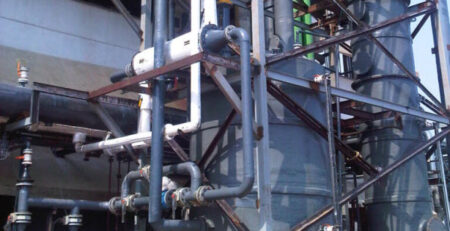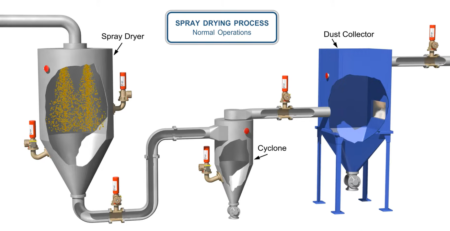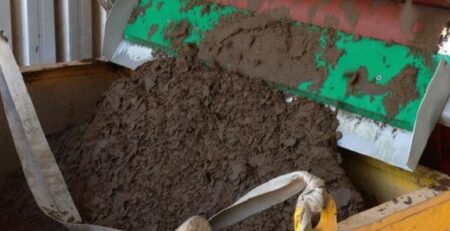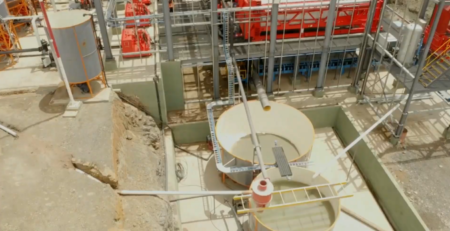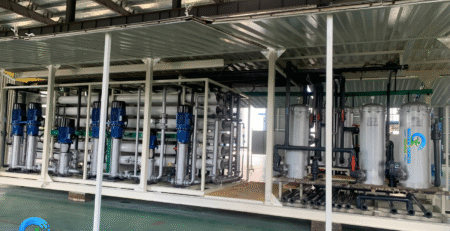Solar based Water Treatment, Sewage Treatment, Effluent Treatment Plants
Importance of Solar Lights
Photovoltaic or PV electricity, which is what most people call solar power, has been around for a long time. Most of the energy that is used in commercial buildings, offices, and other business places comes from electricity. During the day, an office building uses a lot more electricity, which makes it a great place to put solar panels. Solar energy is a clean source of energy that can be used over and over again. It is also a reliable source of energy that can be used repeatedly.
 Five Reasons Why You Should Use Solar Power for WTP, STP, ETP
Five Reasons Why You Should Use Solar Power for WTP, STP, ETP
Most individuals are seeking for new ways to reduce their energy expenditures in today’s energy-conscious environment. Solar lighting would be the ideal technique to accomplish this. The following material will outline numerous advantages of solar energy so you can see how using it can work in your favour.
1. Reduced costs
One running cost that can be reduced is electricity, which can also increase the price of your company. You can save money for other supplies by using a solar power system, which will provide you with electricity for many years at a reasonable cost.
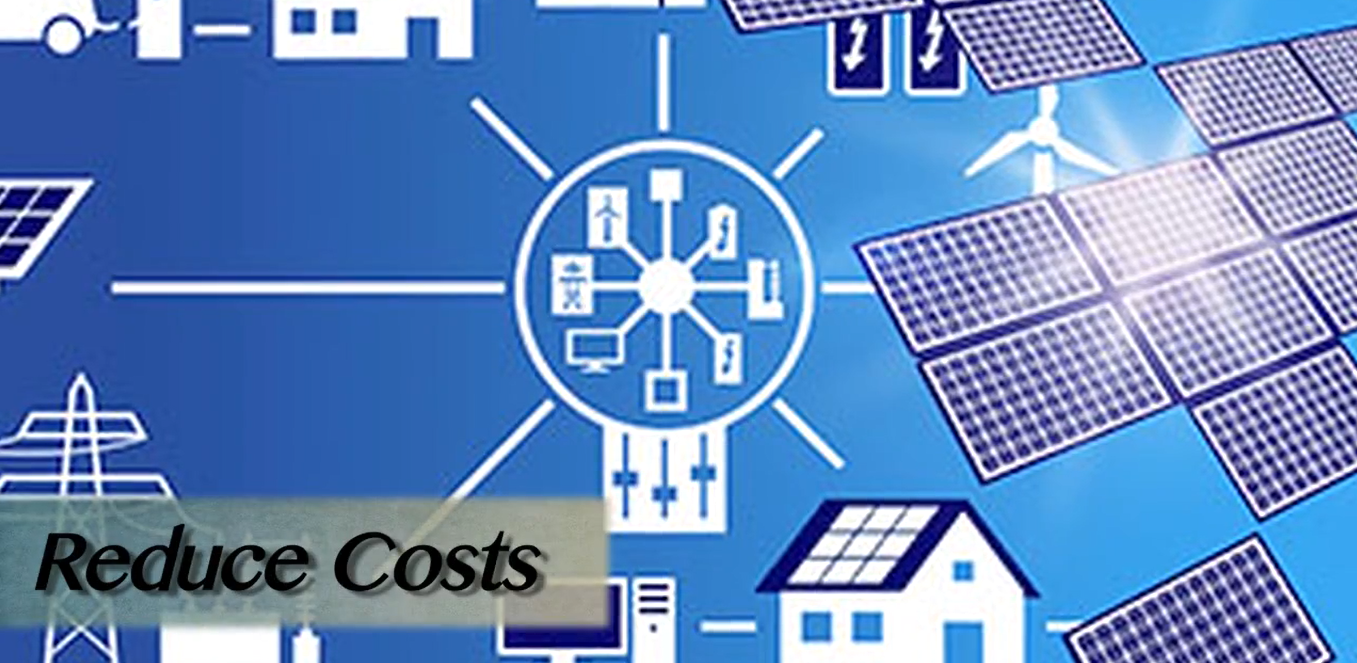 2. Return on Investment
2. Return on Investment
Using solar electricity has a high return on investment because you can save money while also having the chance to make a wise investment in the future of your company thanks to reasonable government incentives.
3. Carbon footprint reduction.
By using solar energy instead of conventional energy sources, you would reduce pollution from chemicals and other toxins and benefit the environment. As a result, you would benefit the atmosphere of the Earth.
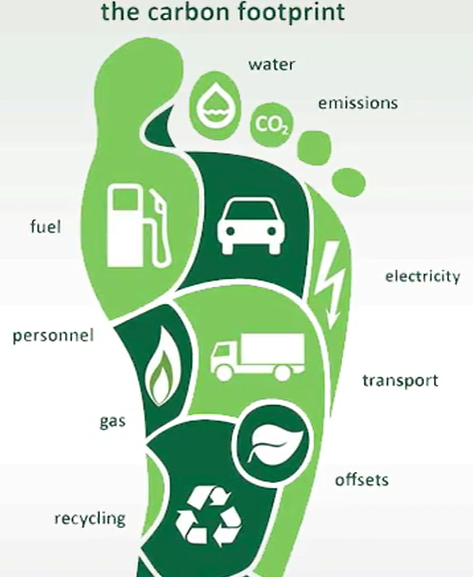 4. It’s renewable.
4. It’s renewable.
We do not need to import the sun because it is one of our natural resources. As a result, we avoid spending money on energy exports to other countries.
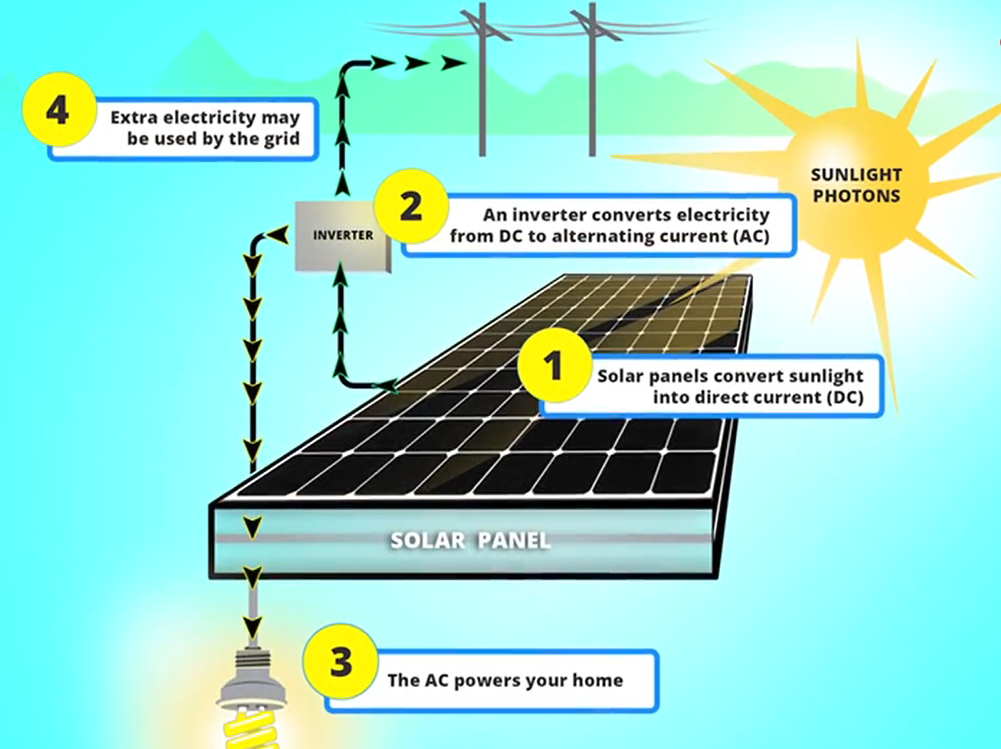 5. Going green is good.
5. Going green is good.
Nowadays, becoming green is a symbol of responsibility. Going green may result in generating more money since, as many of us are aware, increased efficiency frequently yields higher profits.
 Now, if you’re considering installing solar panels for water treatment, think about these factors first. You can install a solar panel with your water treatment plant and take use of solar energy, decreasing your dependence on an electrical system or power grids. Here are five things to think about before installing solar panels. Keep the following things in mind if you plan to do so.
Now, if you’re considering installing solar panels for water treatment, think about these factors first. You can install a solar panel with your water treatment plant and take use of solar energy, decreasing your dependence on an electrical system or power grids. Here are five things to think about before installing solar panels. Keep the following things in mind if you plan to do so.
Solar Panels Would be Advantageous
Analyse the requirements and parameters before you instal solar power use for WTP STP ETP. Installing solar panels with ETP, SWTP, RO, and DWTP would be pointless, if necessary, conditions weren’t met.
 Calculate The Rate of Consumption.
Calculate The Rate of Consumption.
Your energy bills can be quickly examined to find out how much electricity you use. A modest solar system would be adequate if the use is lower, and vice versa.
Types of Solar Panel Use for WTP, STP, ETP
There are two main solar technologies on the market:
- Photovoltaics, which turns sunlight into electricity using a network of cells,
- thermal, which warms water or air for usage using sunshine.
Depending on whether you need to produce power for WTP, STP, or ETP, or if you need to heat air or water. You may select solar technology.
Warranty Information
A solar panel can typically last up to 25 years. Under normal conditions, be sure to buy from a reputable provider so that you can be confident of durable performance with few difficulties down the line.
 The Setup’s Cost
The Setup’s Cost
Calculate, the cost of buying and installing the full solar system. The price per panel would increase as the panel’s power increased. However, if you consider the installation and output that they would generate, they might end up being more affordable altogether. Instead of going with the most popular models, pick the solar panel that is most suited for your OFF GRID WTP, STP, and ETP. Even yet, installing solar panels with WTP, STP, or ETP presents significant difficulties because the equipment is expensive, and a wide service area is needed to put the panels. However, compared to the great benefits of employing solar energy in water treatment plants, these difficulties are insignificant.
Water Treatment Facilities Using Solar Energy
The water travels a long way from the mountains to our houses before stopping at the Waterman Australia water treatment facility, where it is filtered and transformed into award-winning pure water. And soon, the city will be able to boast about having more clean electricity to purify the water.
A 633-kilowatt solar power system costing several million dollars will provide nearly all of the electricity required by our water treatment units.
What we’re able to do through this project is decrease what we pay per kilowatt right now and have an escalator of only 2% per year over the next 20 years,
The solar energy rate will start at only 5.8 cents per kilowatt hour compared to the current 6.5 to 8.2 cents per kilowatt hour for regular electricity, and the fixed increases in the solar rate, spell more savings. Depending on how much you think electricity is going to go into increasing cost that could be anywhere from 800,000 to a million dollars over 20 years.
No upfront expenses for the city are another plus. The cost of constructing and maintaining this five-acre solar farm employing tried-and-true solar energy technology is being borne by the waterman Australia firm.
Solar photovoltaics produce energy when sunlight contacts the panel and excites an electron within the semiconductor material. This process takes place under highly sunny conditions. Additionally, it occurs when it is cloudy. Simply said, it doesn’t generate as much electricity on overcast or snowy days. With more than 300 sunny days annually, however, it is anticipated that the project will generate 85% of the energy required to power 1800 homes, which is what the water treatment plants require.
Start locally because that is what is most crucial for us and our dedication to sustainability. The world may not always be able to be saved in a day. But the main thing is to start small and demonstrate your commitment. Over the years, the solar farm will remove close to 40 million pounds of carbon dioxide emissions from the atmosphere. According to waterman Australia, who has been working on it for a while, the project demonstrates how the city is acting responsibly.
Although the five-acre solar farm being built northwest of the water treatment plant is not thought to be very large, it is thought to be a useful energy provider.
Both its generation and consumption take place on-site. As a result, there are no distribution or transmission losses. Therefore, it makes really excellent use of a piece of land that may not be able to be used in any other way. The Single Axis Tracking System would be made up of more than 3300 Solar Electric Panels.
In the morning when the suns in the east, the solar panels will be facing east and as the sun rises, the solar panels will track the sun across the sky and end up pointing West in the evening. The project includes remote control access to the solar farm.
So, we know on any given minute of any given day over that entire 20-year period, how much electricity our solar farms are producing for our customers.
The actual issue is our dedication to environmental sustainability and City Council’s pursuit of dual sustainability in terms of economy and environment. And to achieve our aims of a sustainable and clean energy future, we must carry out initiatives that are both financially sensible and don’t burden taxpayers.
How do Soler Cells Work for WTP, STP, ETP
Solar energy has greatly increased its share of the global energy supply over the past twenty years. We’ll explain how photovoltaic or solar cells generate electricity. The most plentiful and totally free source of energy on Earth comes from the sun. Solar energy has greatly increased its share of the global energy supply over the past twenty years. We’ll explain how photovoltaic or solar cells generate electricity. The most plentiful and totally free source of energy on Earth comes from the sun.
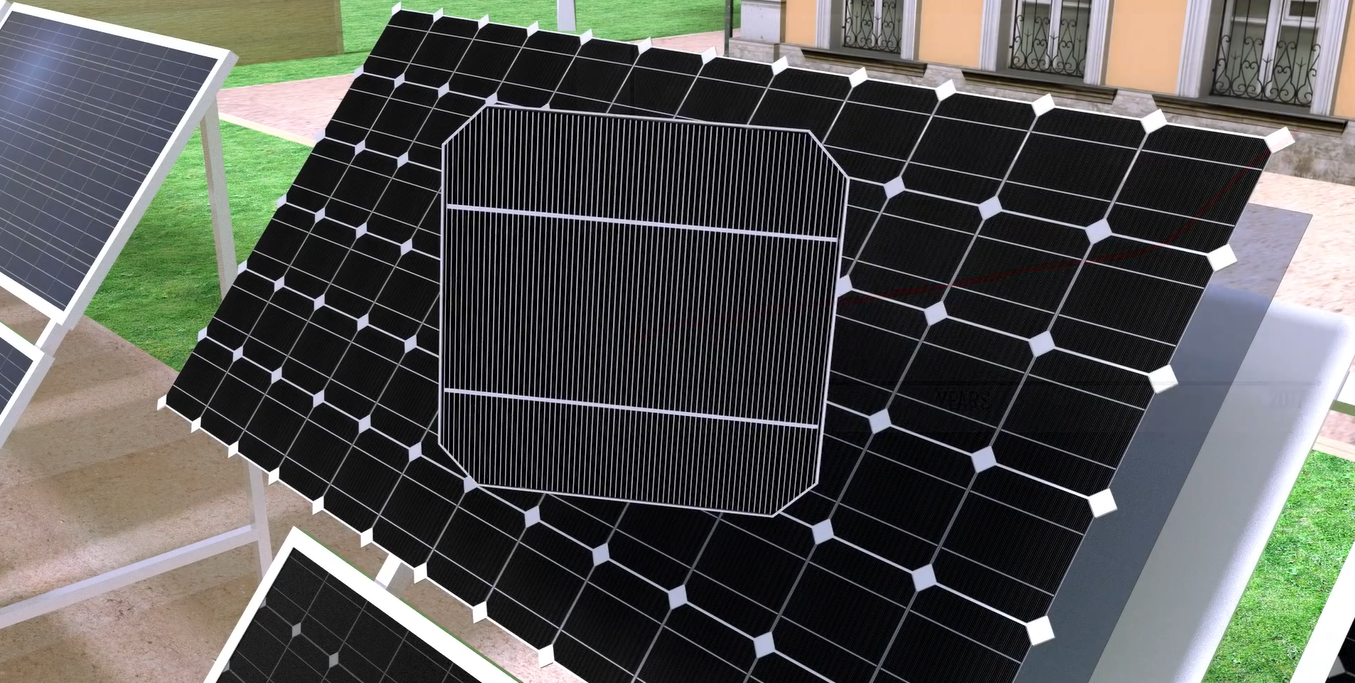 For the water treatment plants to use this energy, we need help from sand, which is the second most common element on Earth.
For the water treatment plants to use this energy, we need help from sand, which is the second most common element on Earth.
To use the sand in solar cells, pure silicon crystals that are 99.999 percent pure must be made from it.
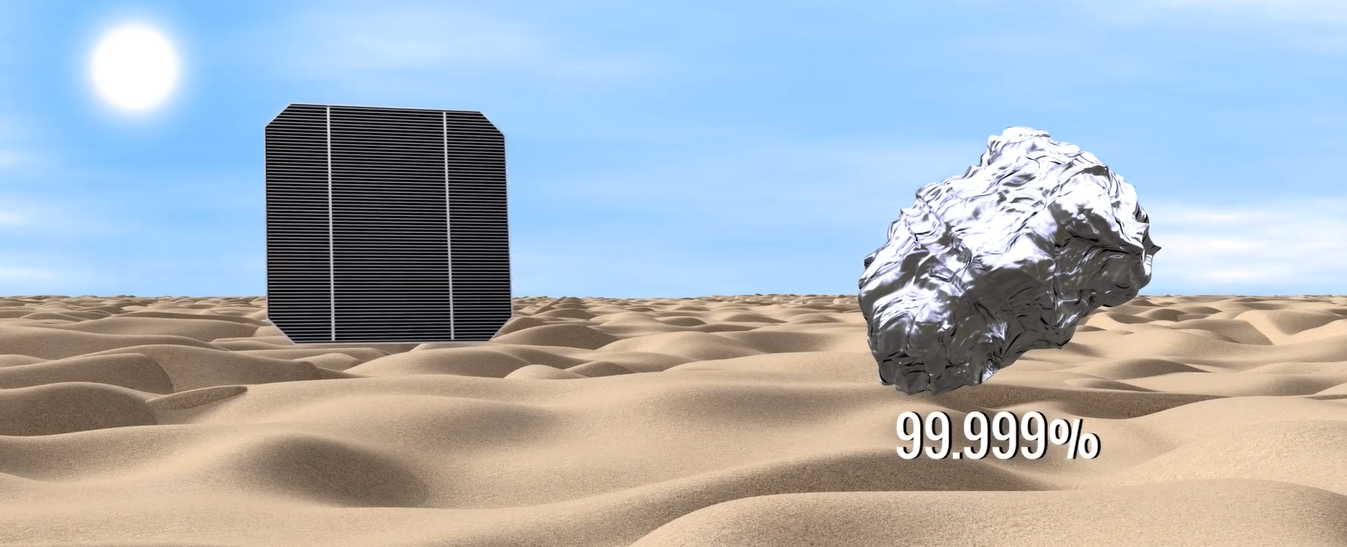 The sand must undergo a difficult purifying procedure as indicated below in order to do this. The raw silicon is changed into a gaseous compound of silicon.
The sand must undergo a difficult purifying procedure as indicated below in order to do this. The raw silicon is changed into a gaseous compound of silicon.
![]() Then hydrogen is added to make polycrystalline silicon that is very pure. Silicon wafers, which are very thin slices, are made from these silicon ingots. A silicon wafer is at the heart of a photovoltaic cell. When we look at the structure of silicon, we can see that the atoms are stuck together.
Then hydrogen is added to make polycrystalline silicon that is very pure. Silicon wafers, which are very thin slices, are made from these silicon ingots. A silicon wafer is at the heart of a photovoltaic cell. When we look at the structure of silicon, we can see that the atoms are stuck together.
You give up your freedom when you become attached to someone. There is no freedom of motion for the electrons in the silicon structure. Let’s think about the silicon crystals’ 2D structure to make the study simpler.
Assume that it is filled with phosphorus atoms that have five valence electrons. One electron is currently free to move inside this framework. The electrons will travel freely once they have enough energy.
When light hits them, the photons give the electrons energy and set them free to move, so let’s try to make a very simple solar cell with just this material. Even though the electrons move around randomly, no current flows through the load because of this.
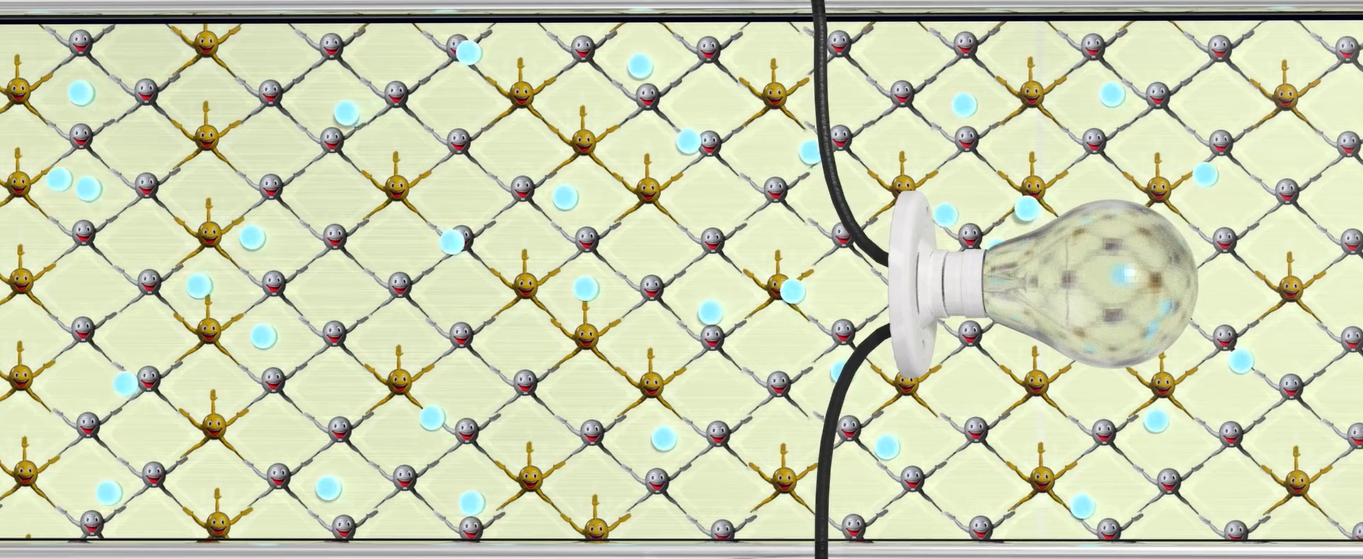 For the flow of electrons to go in only one direction, they must be pushed in that direction. A PN junction is an easy and effective way to get the power going. Let’s take a look at how a PN junction makes the driving force. P type doping is like N type doping in that it makes one hole for every atom of pure silicon by adding boron with three valence electrons. If these two types of doped materials were put together, some of the electrons inside would move to the P region and fill the holes there.
For the flow of electrons to go in only one direction, they must be pushed in that direction. A PN junction is an easy and effective way to get the power going. Let’s take a look at how a PN junction makes the driving force. P type doping is like N type doping in that it makes one hole for every atom of pure silicon by adding boron with three valence electrons. If these two types of doped materials were put together, some of the electrons inside would move to the P region and fill the holes there.
In this way, a depletion area is made, which is a place where there are no free electrons or holes. As electrons move, the border on the n side becomes slightly positively charged, while the border on the P side becomes negatively charged. Between these charges, there will always be an electric field, and this electric field creates the force needed to move things.
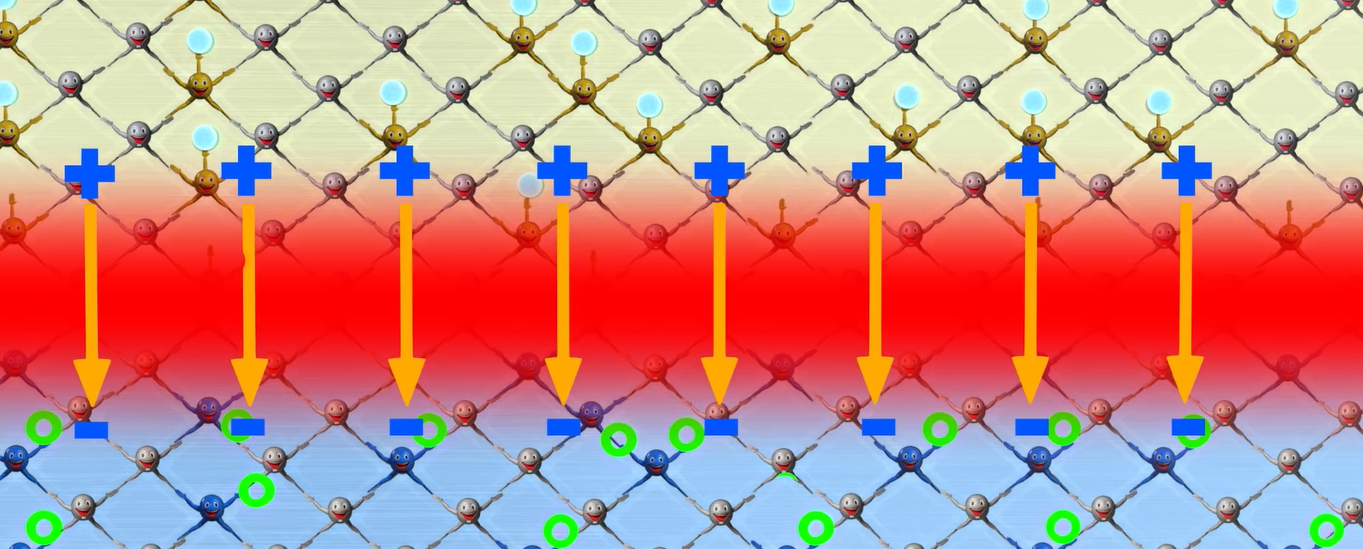 Let’s look at it carefully. When the light gets to the PN junction, something interesting happens. Light comes in through the PV cell’s N region, goes through it, and rises to the depletion area. In the depletion area, the energy from this photon is enough to make a pair of electrons and holes.
Let’s look at it carefully. When the light gets to the PN junction, something interesting happens. Light comes in through the PV cell’s N region, goes through it, and rises to the depletion area. In the depletion area, the energy from this photon is enough to make a pair of electrons and holes.
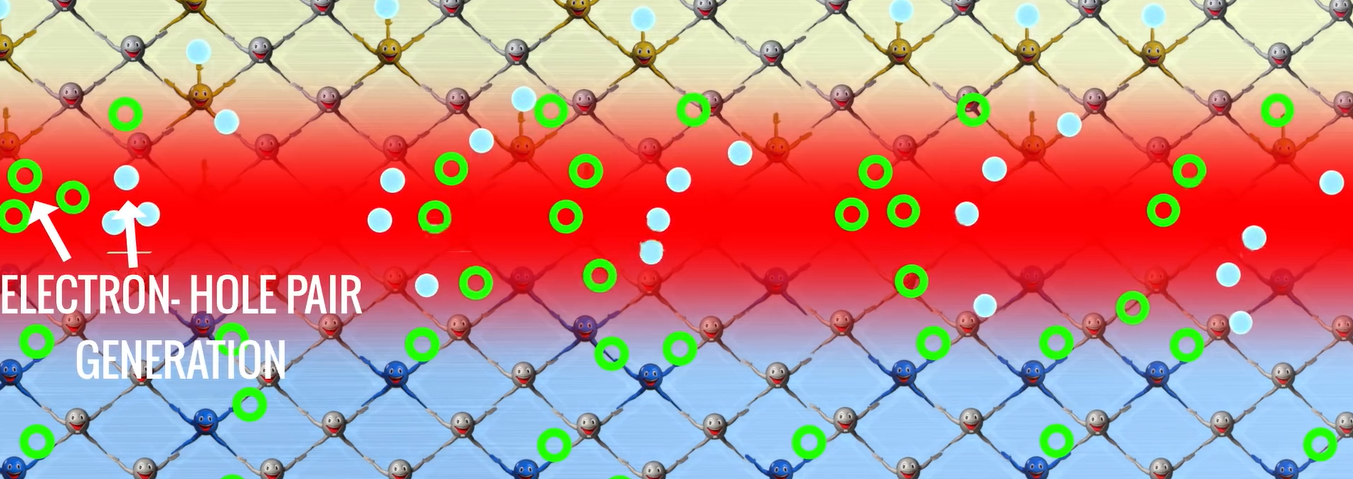 The electric field and the depletion region force the electrons and holes in the depletion region to leave. Here, we can see that the number of electrons and holes in the N and P regions gets so high that a difference in the potential will form between them. As soon as we connect any load between these zones, electrons will start to flow through the load and, after going the whole length of the load, will join up with the holes in the p region.
The electric field and the depletion region force the electrons and holes in the depletion region to leave. Here, we can see that the number of electrons and holes in the N and P regions gets so high that a difference in the potential will form between them. As soon as we connect any load between these zones, electrons will start to flow through the load and, after going the whole length of the load, will join up with the holes in the p region.
In this way, a solar cell always makes direct current. In a real solar cell, you can see that the P layer is thick and only slightly doped, while the top layer is very thin and heavily doped. By doing this, the performance of the cell will be better. Just look at how the depletion region is getting bigger and bigger.
You should take note that the depletion region’s thickness is far more in this instance than it was in the prior one. This indicates that, in contrast to the earlier situation, a larger area is where the electron whole pairs are formed as a result of the light striking. The PV cell generates higher current as a result. The thin top layer also has the benefit of allowing more light energy to enter the depletion zone.
Let’s now examine a solar panel’s structure. The solar panel can be seen to have several layers. You’ll be surprised to learn that one of these PV cells is a layer of cells.
After going through the fingers, the electrons end up in the busbars. Copper strips connect the top negative side of this cell to the back of the next cell.
It sets up a chain of events here. The solar panel is made by connecting these cells in the series to another series of cells in parallel. However, a single PV cell can only make about 0.5 volts of electricity.
By connecting the cells in series and parallel, the current and voltage are brought up to a useful level. The EVA sheets on both sides of the cells protect them from shocks, vibrations, moisture, and dirt. Why do the solar panels have two different styles?
 The reason for this is that the crystal lattice structure inside varies. In polycrystalline solar panels, the crystals are set up at random. If the chemical process of making silicon crystals keeps going, the polycrystalline cells will change into monocrystalline cells.
The reason for this is that the crystal lattice structure inside varies. In polycrystalline solar panels, the crystals are set up at random. If the chemical process of making silicon crystals keeps going, the polycrystalline cells will change into monocrystalline cells.
 Although both operate according to the same principles, monocrystalline cells have a better electrical conductivity. Monocrystalline cells are less common since they are more expensive. Solar voltaic energy contributes only 1.3 percent of the world’s total energy, despite the fact that PV cell operating expenses are insignificant. This is mostly due to the higher initial prices and efficiency limitations of solar photovoltaic panels, which make them less competitive with conventional energy sources.
Although both operate according to the same principles, monocrystalline cells have a better electrical conductivity. Monocrystalline cells are less common since they are more expensive. Solar voltaic energy contributes only 1.3 percent of the world’s total energy, despite the fact that PV cell operating expenses are insignificant. This is mostly due to the higher initial prices and efficiency limitations of solar photovoltaic panels, which make them less competitive with conventional energy sources.
 Batteries and solar charge controllers can be used with solar panels on water treatment plants to store electricity. The enormous quantity of storage needed for a solar power plant, however, is impractical. Therefore, generally speaking, they are connected to the electrical grid system with the use of power inverters in a similar manner to how other traditional power plant output are connected. AC is produced from DC and supplied to the grid.
Batteries and solar charge controllers can be used with solar panels on water treatment plants to store electricity. The enormous quantity of storage needed for a solar power plant, however, is impractical. Therefore, generally speaking, they are connected to the electrical grid system with the use of power inverters in a similar manner to how other traditional power plant output are connected. AC is produced from DC and supplied to the grid.
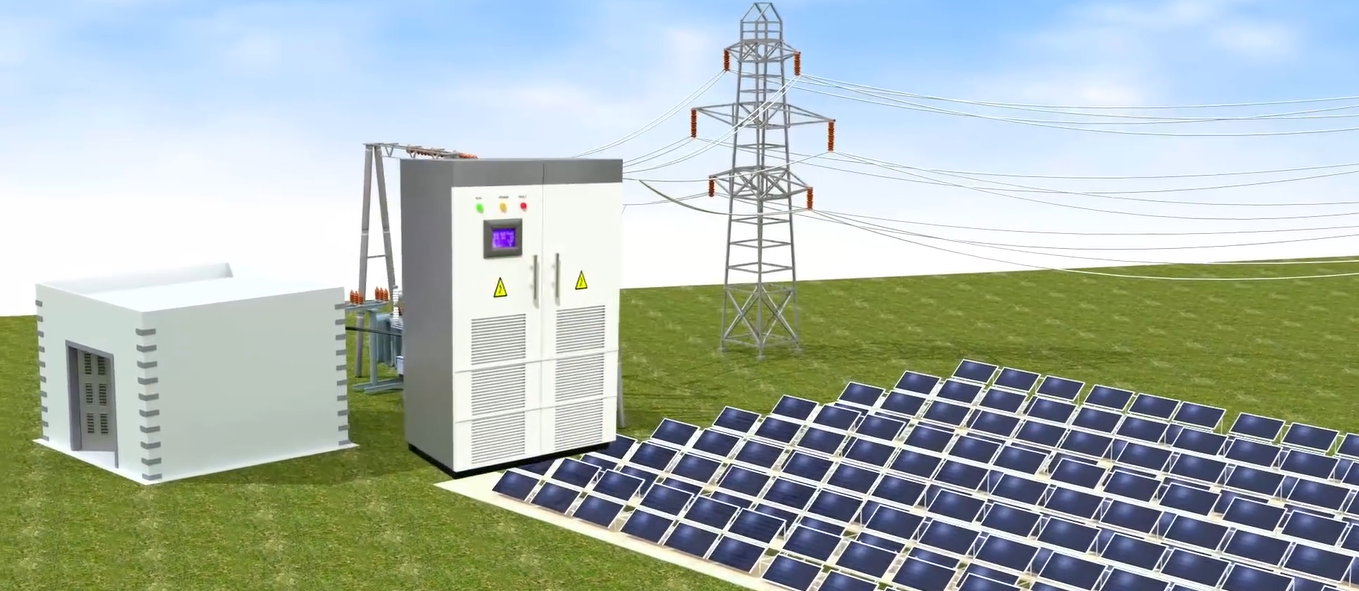 The Solar System for ETP, STP, SWTP (Solar Power Systems: On-grid Versus Off-grid)
The Solar System for ETP, STP, SWTP (Solar Power Systems: On-grid Versus Off-grid)
For its affordability and sustainability, solar power is becoming increasingly popular. Let’s now discuss the two categories of solar energy systems.
- On grid
- Off grid
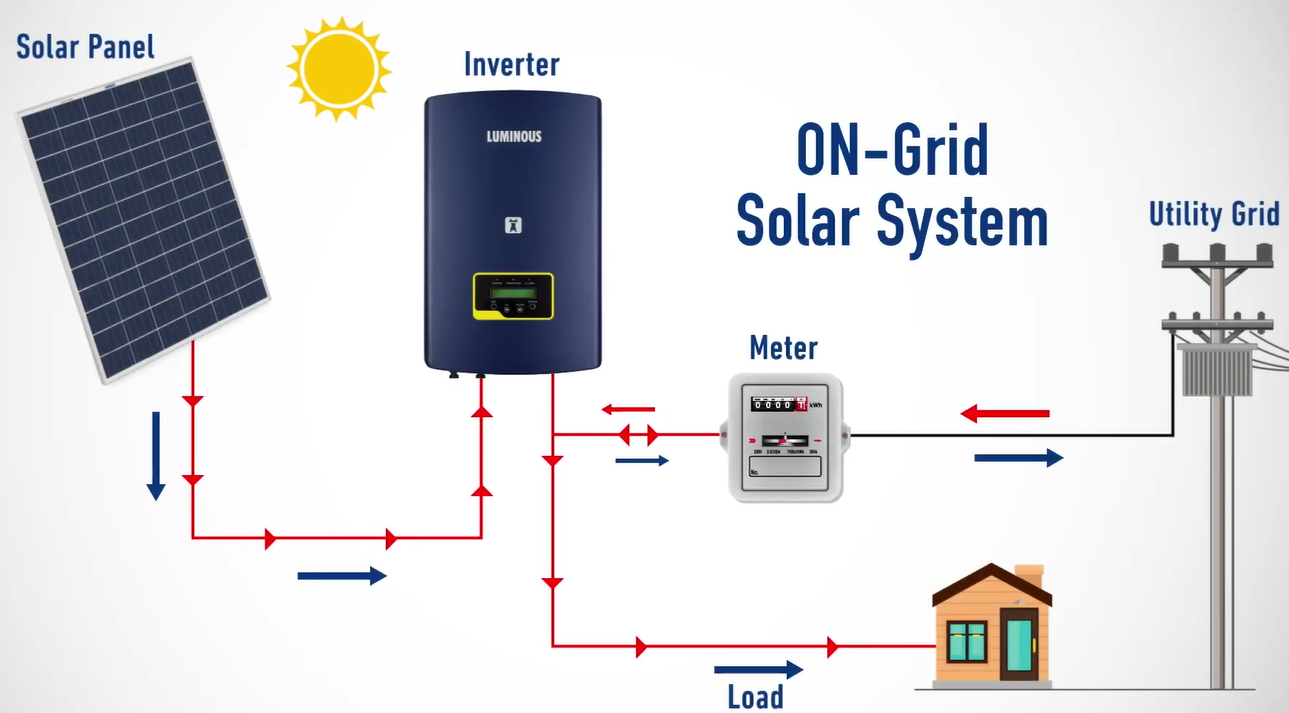 On grid and off grid operate independently of the grid system, which is the main distinction between the two. In an on-grid system, the solar panels turn solar energy into DC current, which is then changed into AC current by the inverter to power your solar WTP, STP, ETP. Any excess current generated by the solar panels is fed back into the grid as credit, which can then be drawn upon as needed.
On grid and off grid operate independently of the grid system, which is the main distinction between the two. In an on-grid system, the solar panels turn solar energy into DC current, which is then changed into AC current by the inverter to power your solar WTP, STP, ETP. Any excess current generated by the solar panels is fed back into the grid as credit, which can then be drawn upon as needed.
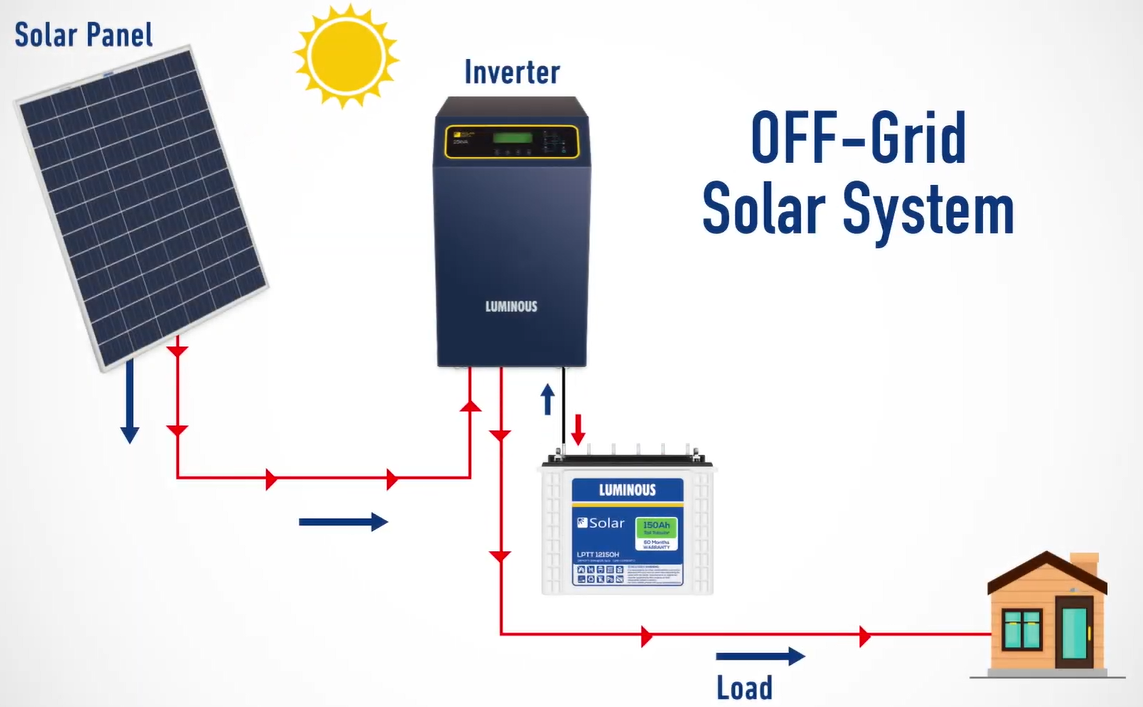 The on-grid system, however, is inoperative during blackouts. Therefore, even though it is economical, it is best employed in locations with infrequent power outages. What about areas where there are frequent power outages or no power at all? The effectiveness of an off-grid solar system can be shown here.
The on-grid system, however, is inoperative during blackouts. Therefore, even though it is economical, it is best employed in locations with infrequent power outages. What about areas where there are frequent power outages or no power at all? The effectiveness of an off-grid solar system can be shown here.
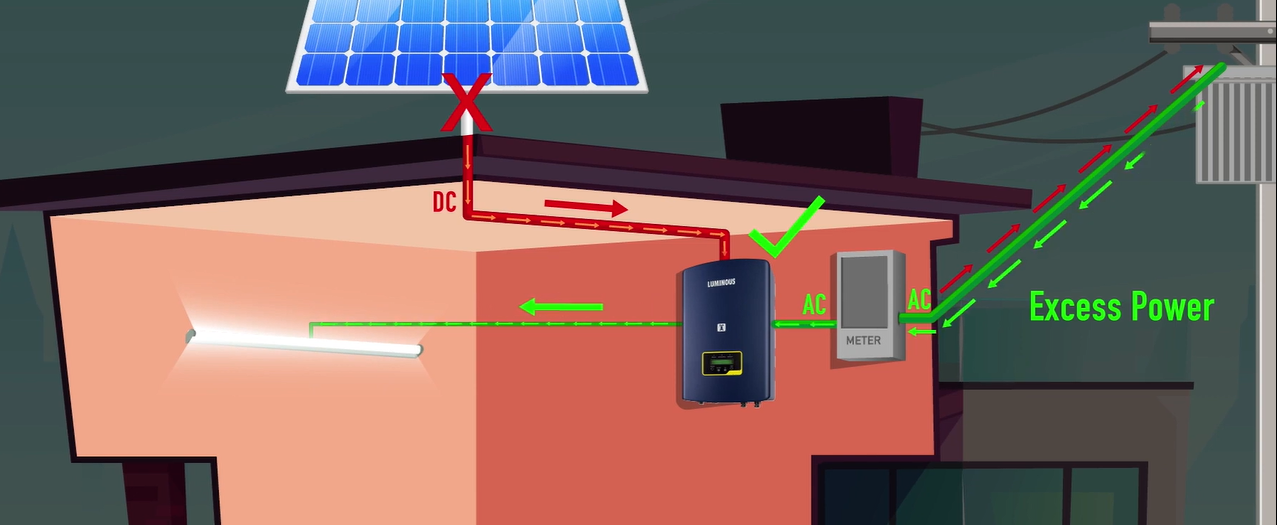 Even in the absence of a mains supply, or when the solar panels aren’t producing any electricity, this forms OFF grid system continues to function. So how does it function?
Even in the absence of a mains supply, or when the solar panels aren’t producing any electricity, this forms OFF grid system continues to function. So how does it function?
The inverter changes the DC power that the solar panels produce into the AC power that the WTP, STP, and ETP need to work. When the electricity generated by the plant is greater than the load on it, the excess power is stored in the battery. In the future, during blackouts or even when the solar panels are unable to produce power, this stored energy may be used.
Advantages
Which grid system is best for me? Both grid systems offer advantages of their own. The on-grid technology is affordable and simple to install. However, they work best in locations with constant power supplies. Off-grid systems are idle in remote locations where there is infrequent or no power supply, and they generate enough power that can be stored and used for WTP, STP, and ETP at night or when the power grid is down. Businesses can recover the investment by saving on electricity bills in just three to eight years.
Solar Powered Desalination
clean water Without it, life would not exist. Water plays a role in everything we do, not just the things we drink but it’s getting harder to find. Today, 4 billion people already lack access to clean water. Particularly islands in coastal regions are at the forefront of climate change. Water sources are dwindling, and droughts are occurring more regularly. The sea has the key to releasing more freshwater.
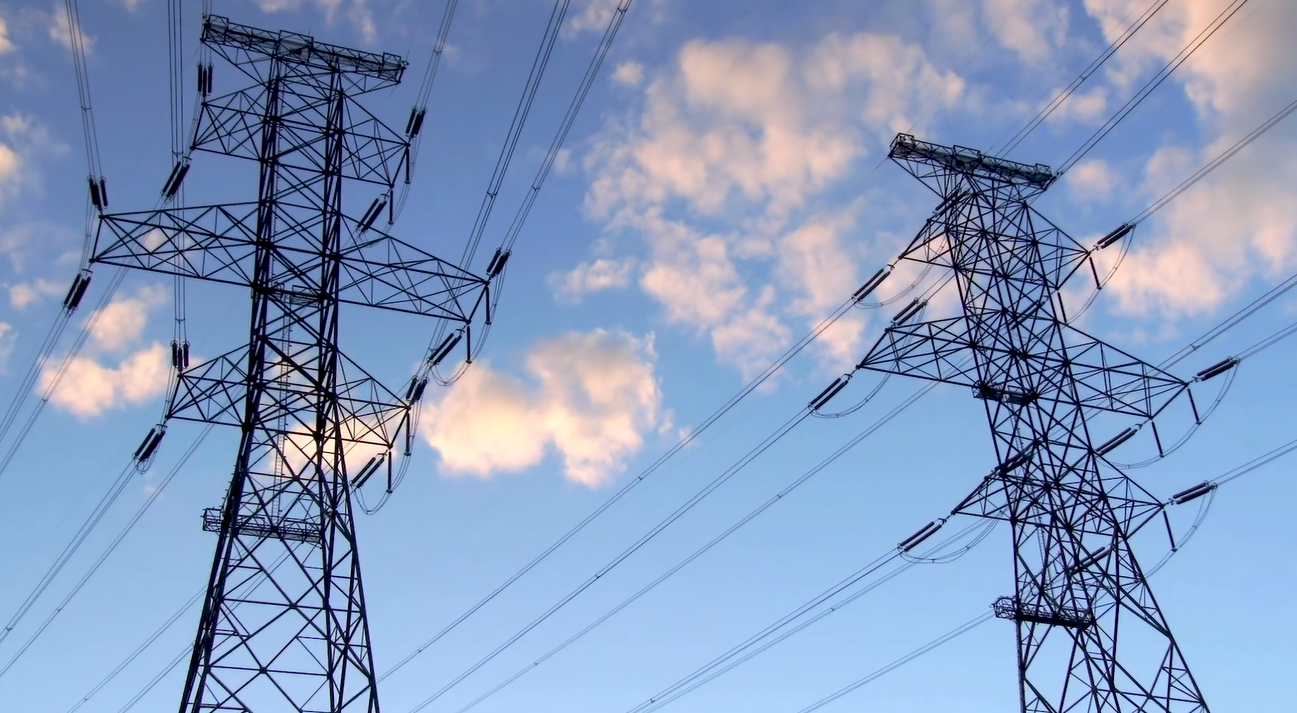 Desalination is an expensive procedure since it requires a lot of energy and energy prices are high. Why not take advantage of the weather, we reasoned. There is a tonne of ocean and sunshine, but hardly a drop tremendous drink. Waterman Australia provides dependable access to clean water from an abundance of resources by harnessing the power of the sea and the sun.
Desalination is an expensive procedure since it requires a lot of energy and energy prices are high. Why not take advantage of the weather, we reasoned. There is a tonne of ocean and sunshine, but hardly a drop tremendous drink. Waterman Australia provides dependable access to clean water from an abundance of resources by harnessing the power of the sea and the sun.
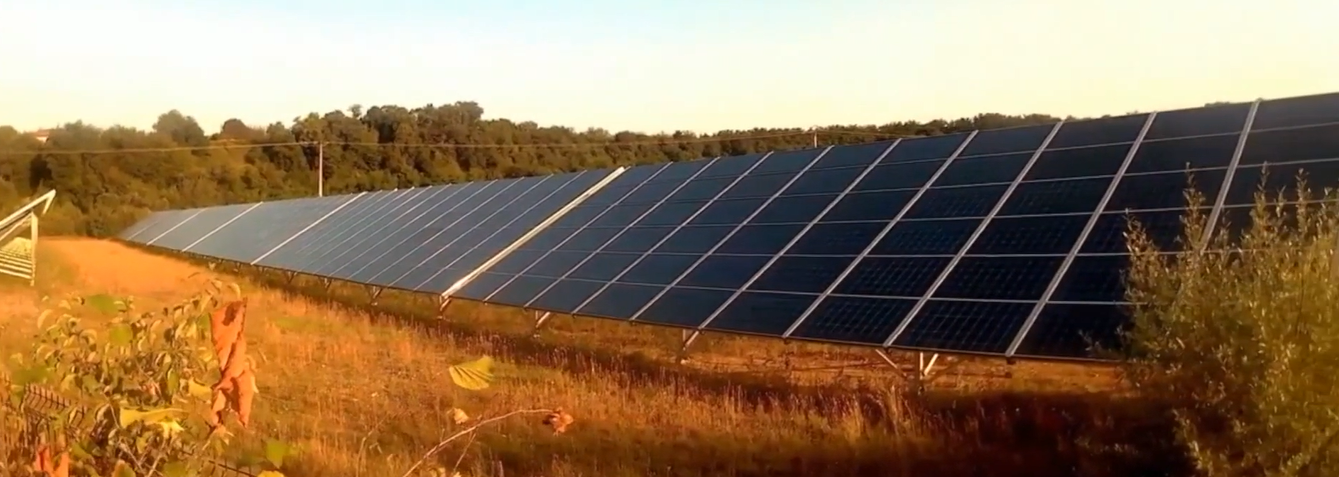 Desalination with solar energy offers independence and resiliency. Let’s examine its operation. A well or an open intake is used to provide access to brackish or saltwater. Reverse osmosis membranes are used for desalination after pre filtration to first remove the bigger particles from the water. For the aim of making drinking water, fresh water can be remineralized. It is temporarily kept in a reservoir and is available for use at any time. Before the point of usage, a filter is added to ensure the quality of the water.
Desalination with solar energy offers independence and resiliency. Let’s examine its operation. A well or an open intake is used to provide access to brackish or saltwater. Reverse osmosis membranes are used for desalination after pre filtration to first remove the bigger particles from the water. For the aim of making drinking water, fresh water can be remineralized. It is temporarily kept in a reservoir and is available for use at any time. Before the point of usage, a filter is added to ensure the quality of the water.
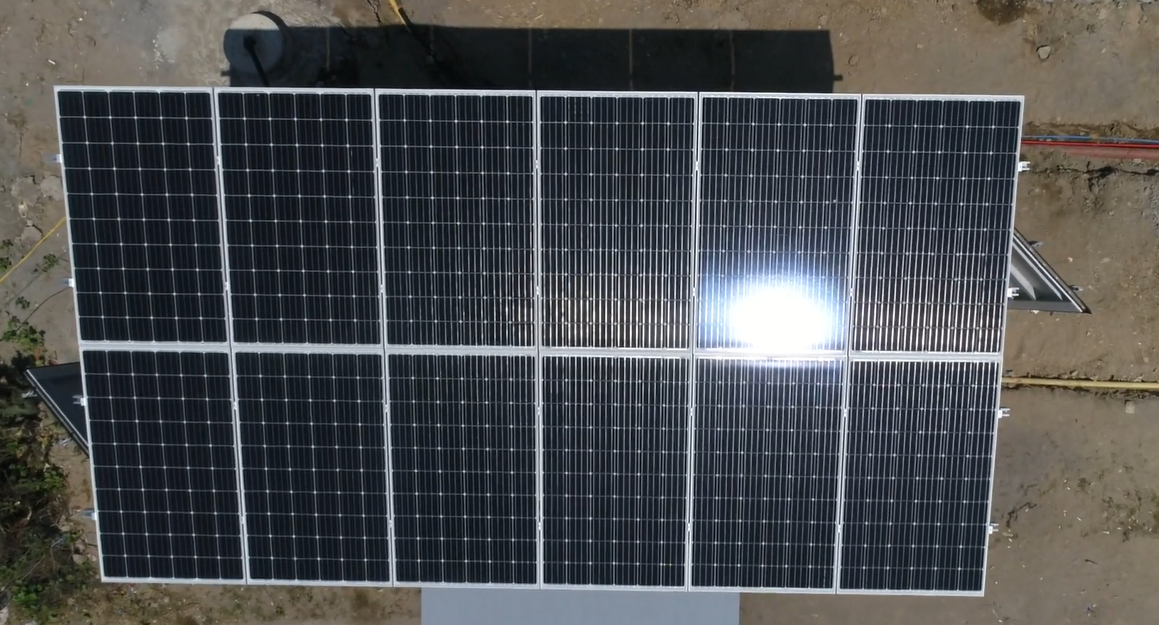 The sun provides all the necessary energy. We use seventy-five percent less energy overall. Using technology for energy recovery. The energy left over after the saltwater passes through the reverse osmosis membranes is used in this process.
The sun provides all the necessary energy. We use seventy-five percent less energy overall. Using technology for energy recovery. The energy left over after the saltwater passes through the reverse osmosis membranes is used in this process.
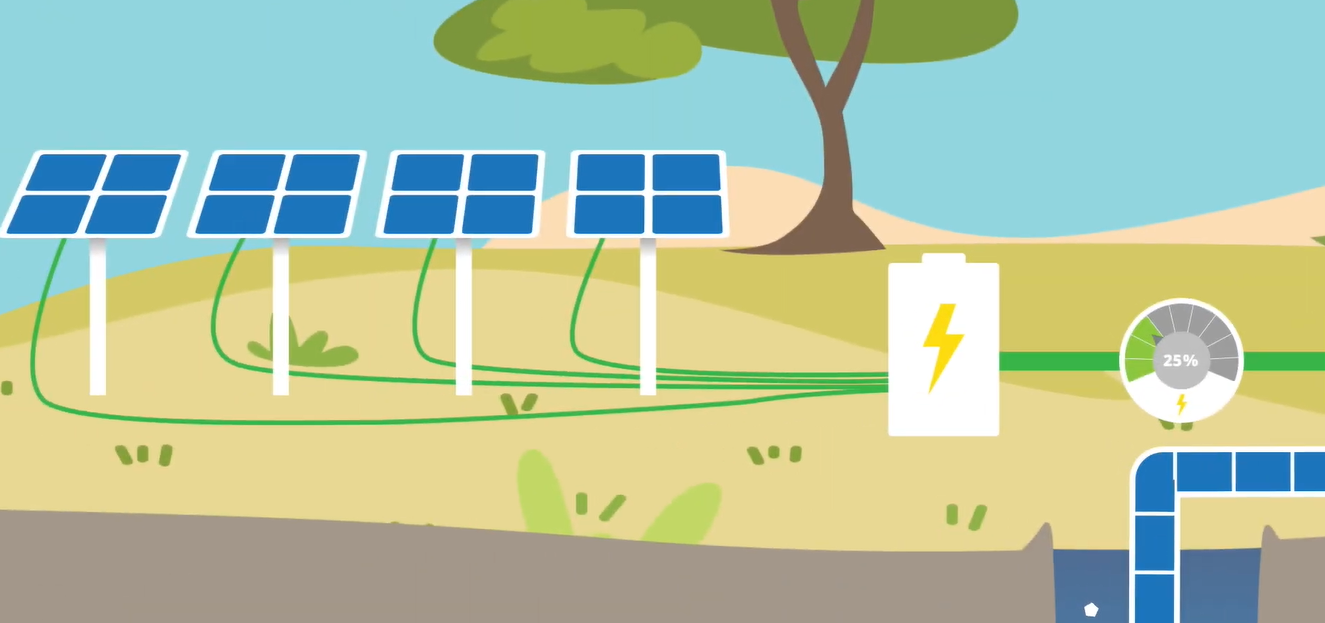 This implies that we can use four times less solar panels. A minimal number of batteries are employed to counteract the variations in the Sun caused by passing clouds. They are suited for warm tropical areas and require no upkeep. The membranes are automatically cleaned with new water before turning off at night and during extended stops to prevent frequent replacement.
This implies that we can use four times less solar panels. A minimal number of batteries are employed to counteract the variations in the Sun caused by passing clouds. They are suited for warm tropical areas and require no upkeep. The membranes are automatically cleaned with new water before turning off at night and during extended stops to prevent frequent replacement.
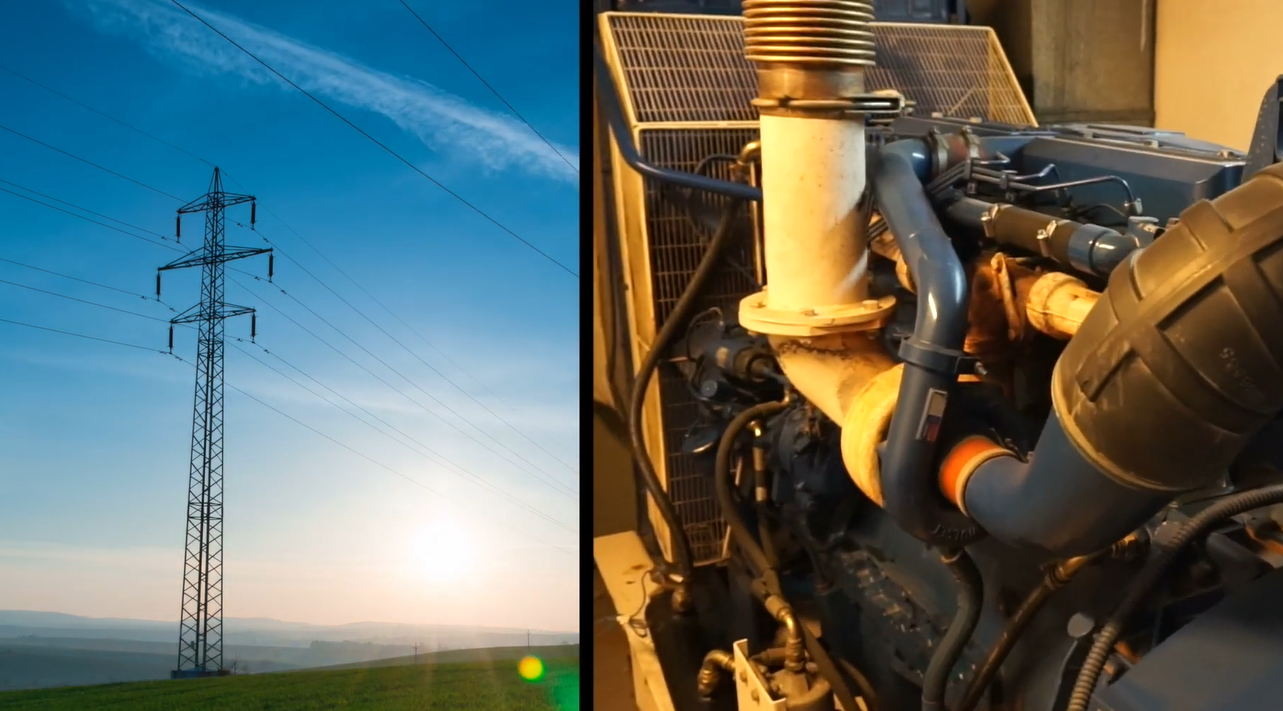 The answer is hybrid in nature. So, if powered by a grid or generator, it is possible to double the amount of water produced. For remote applications, the units are perfect. because they are small, plug-and-play, and simple to use. They might be provided in a little container that is all set up and ready to use. Automation and the use of extremely robust components reduce maintenance. The water quality is continuously monitored, and for stress-free operation, remote monitoring and control are also incorporated.
The answer is hybrid in nature. So, if powered by a grid or generator, it is possible to double the amount of water produced. For remote applications, the units are perfect. because they are small, plug-and-play, and simple to use. They might be provided in a little container that is all set up and ready to use. Automation and the use of extremely robust components reduce maintenance. The water quality is continuously monitored, and for stress-free operation, remote monitoring and control are also incorporated.
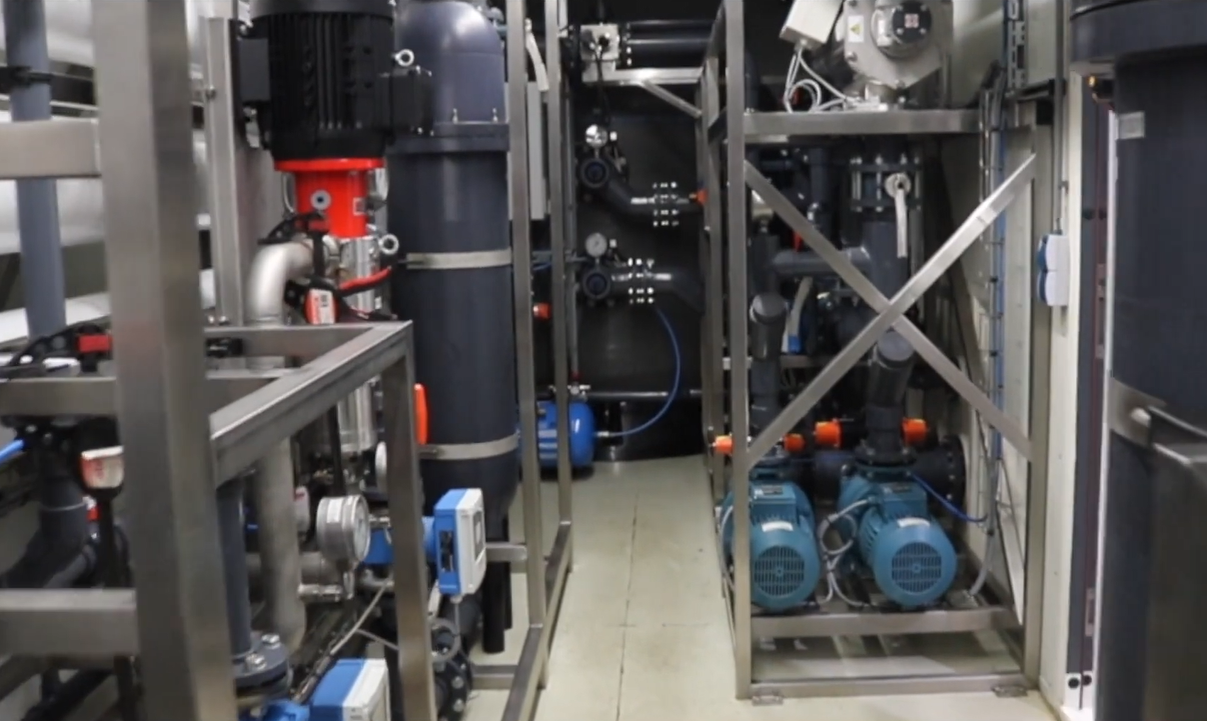 The Solar powered wastewater treatment plant is consisting of five parts namely
The Solar powered wastewater treatment plant is consisting of five parts namely
- Solar panels
- Preliminary
- Primary
- Secondary
- Tertiary treatment.
Solar panels are devices that utilise the sun’s rays in order to generate electricity to power the wastewater treatment plant. Preliminary treatment is where the core solids and other large solids are removed. The primary treatment is a stage where the sediments that float or settle down due to gravity are removed.
The secondary treatment is where biological treatment is utilised in order to remove contaminants. Tertiary treatment is the final stage of a wastewater treatment plant where the remaining contaminants are removed.
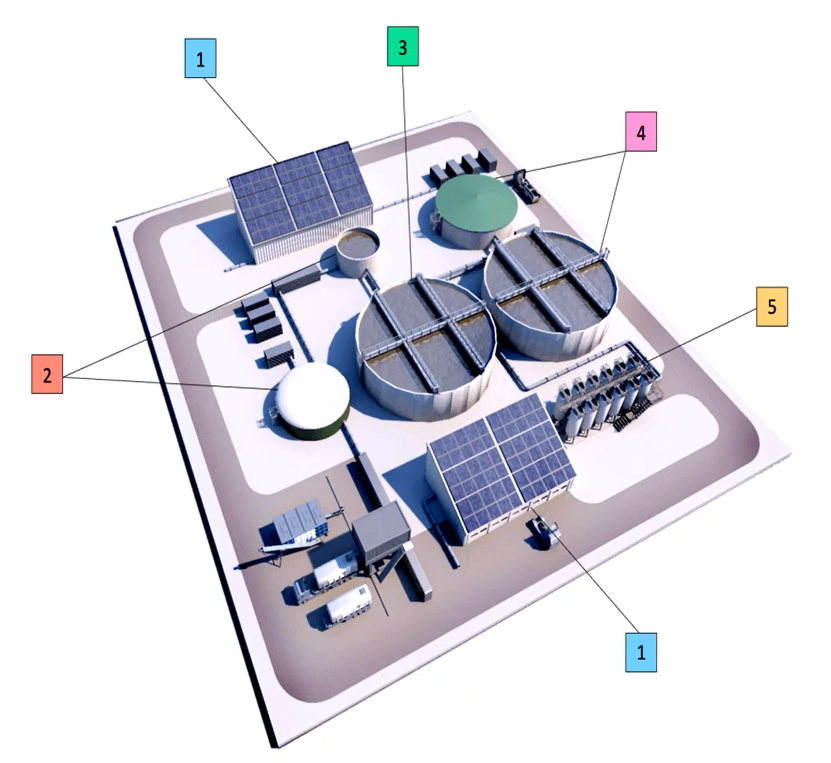 Now we move on to internal parts. The internal parts are consisting of one solar panels or more specifically solar powered photovoltaics system or the PV system. We have screened the company doors and the grid chambers for the preliminary treatment. We have the primary clarifier for the primary treatment. We have aeration tanks and secondary clarifier for the secondary treatment, and we have filtration and disinfection and sludge digestion for the tertiary treatment.
Now we move on to internal parts. The internal parts are consisting of one solar panels or more specifically solar powered photovoltaics system or the PV system. We have screened the company doors and the grid chambers for the preliminary treatment. We have the primary clarifier for the primary treatment. We have aeration tanks and secondary clarifier for the secondary treatment, and we have filtration and disinfection and sludge digestion for the tertiary treatment.
Solar Powered Photovoltaic Systems
Photovoltaic systems powered by solar energy are defined as those that convert the visible spectrum of solar radiation directly into electrical energy. Screening is the removal of large size matters by a series of screens placed across the flow from 30 to 60. As calming tours are responsible for reducing the size of larger suspended solids and are usually present in large wastewater treatment plants. Heavy inorganic materials with specific gravity ranging from 2 to 2.65 are removed by grid chambers. The pre-treated raw sewage water is sent into a primary clarifier, which oversees filtering out anything that might float to the top or fall to the bottom naturally.
The biological sludge is separated from the clean, treated water by biological flocks that settle in aeration tanks. A secondary clarifier is a basin used to hold the activated sludge process until the heavier biomass has settled as activated sludge. Filtration entails additional filtration meant to detect suspended materials to guarantee that no unwanted solids make it into the finished product. By using physical, chemical, and biological methods, harmful bacteria have been removed, rendered inactive, and destroyed in this infection. Sludge disinfection seeks to stabilise and minimise the overall amount of biosolids prior to environmental disposal.
Photovoltaic Systems
As was already established, a PV system essentially transforms solar energy into electrical energy; I’ll talk about how it works. The PV system comprises.
- Solar panels
- The converter
- The inverter
In this instance, solar panels use dual axis trackers, which produce more energy than single axis trackers or fixed systems. From these panels, the input, DC is obtained as input, DC where the required DC or direct current for the inverter is obtained as input, DC. To use the generated power in the water treatment plant, the inverter turns the input direct current (DC) into alternating current or the output AC voltage.
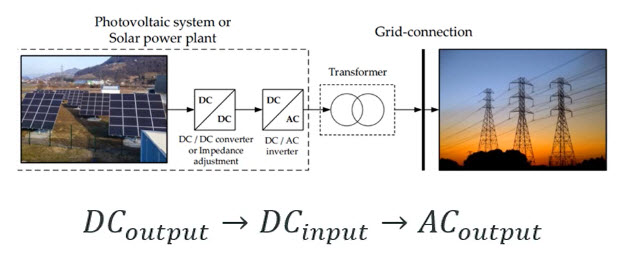 I’ll be covering the wastewater treatment procedure in three parts. the pre-treatment, the steps of coagulation, flocculation, and sedimentation, and polishing.
I’ll be covering the wastewater treatment procedure in three parts. the pre-treatment, the steps of coagulation, flocculation, and sedimentation, and polishing.
The influent or the raw wastewater and during the whole system undergoes preliminary treatment or sedimentation or screening occurs. Then fluid flows through the bar screens separating and removing large debris.
Next is pH control and regular ignition. The pH should be at about seven since at high or low pH, this could cause corrosion of tanks and pipes and can affect the coagulation and flocculation process. As for a brief fluorination this reduces organic compounds in wastewater. Now, the pre treated wastewater enters the coagulation flocculation sedimentation process, which is arguably the heart of the whole system which most contaminants are removed.
Coagulation is first established, drawing in suspended contaminants, and aggregating them for straightforward removal. These clusters occur in flocculation even though they are in coagulation. A flock of these enormous masses will form there. The pure water at the top is something for certain particles that were not eliminated, and these blocks settle at the bottom. The pure water at the top is obtained by letting the silt settle at the bottom during the sedimentation process.
In terms of the polishing phase, this entails filtration and disinfection. Following sedimentation, filtration makes sure that most of the suspended particles are removed in order to keep the water as clear as possible. Disinfection is the final step. Of course, we want the water that is expelled from the system, or our effluent, to be pathogen-free. Pathogens are bacteria or viruses that have the potential to cause disease.
Chlorine gas and chlorine dioxide are often used disinfectants, which is why the figure shows a post-chlorination process. The effluent is therefore held before being sent to the distribution system. The mechanism for invention is thereby shut down. It uses solar energy to power a traditional wastewater treatment process.
 Solar Water Purification Using Reverse Osmosis
Solar Water Purification Using Reverse Osmosis
Waterman Australia water manufacturers have developed a method to continuously desalinate water at a low cost solar operated water treatment plant using only erratic renewable energy.
Let’s look at a task we finished on the Islands. An open ocean intake is used to realise the seawater intake. The seawater is displaced upward by a submersible pump, which is powered by solar panels that were erected on top of the client’s property.
Seawater is diverted into an elevated water barrier using a single pipeline when solar energy is present. The pressure needed for the reverse osmosis process is provided by this raised water buffer only through gravity.
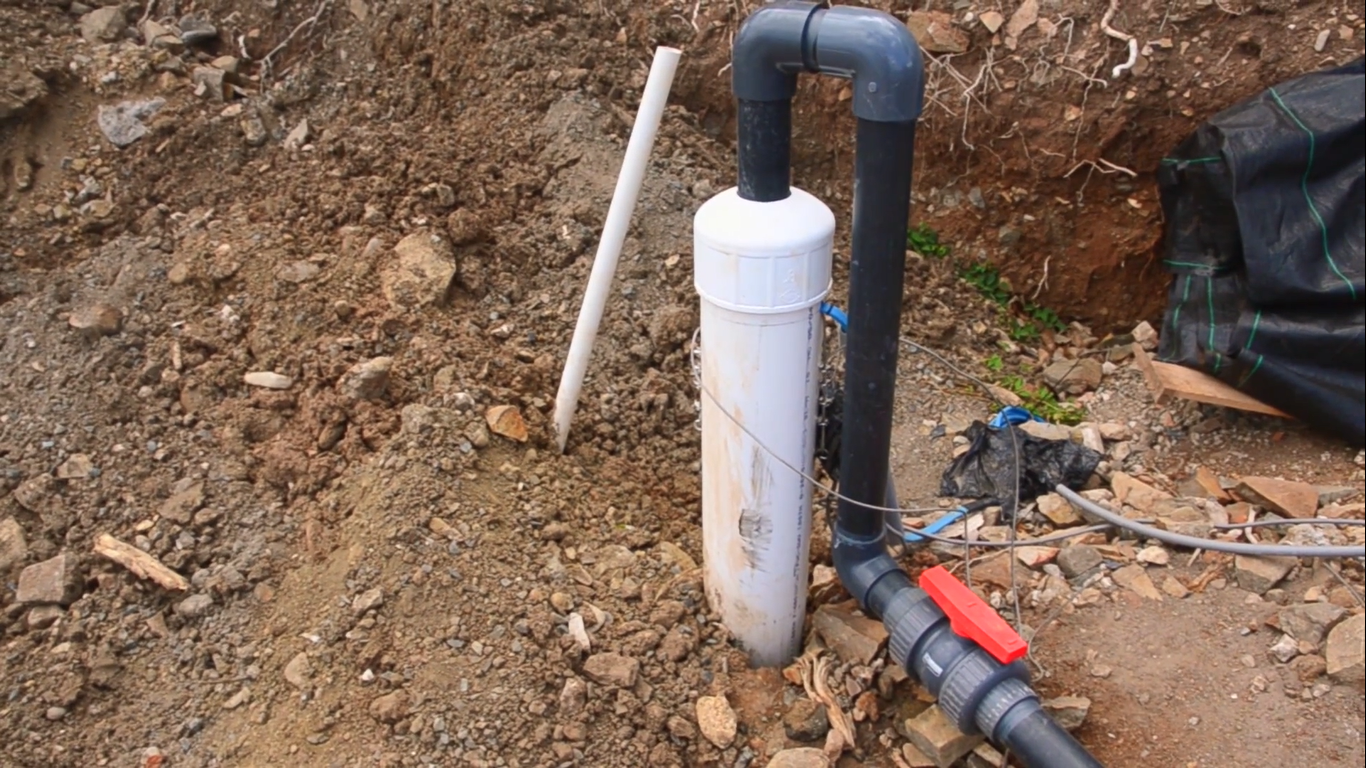 The reverse osmosis device operates continuously and without the use of any additional power thanks to the constant supply pressure from the bottom. However, 500 metres or 1600 feet of pressure head are needed for reverse osmosis of seawater. We recycle the energy that is still in the brine flow produced by reverse osmosis to lessen this elevation need. Two distinct flows are produced by the reverse osmosis plant process.
The reverse osmosis device operates continuously and without the use of any additional power thanks to the constant supply pressure from the bottom. However, 500 metres or 1600 feet of pressure head are needed for reverse osmosis of seawater. We recycle the energy that is still in the brine flow produced by reverse osmosis to lessen this elevation need. Two distinct flows are produced by the reverse osmosis plant process.
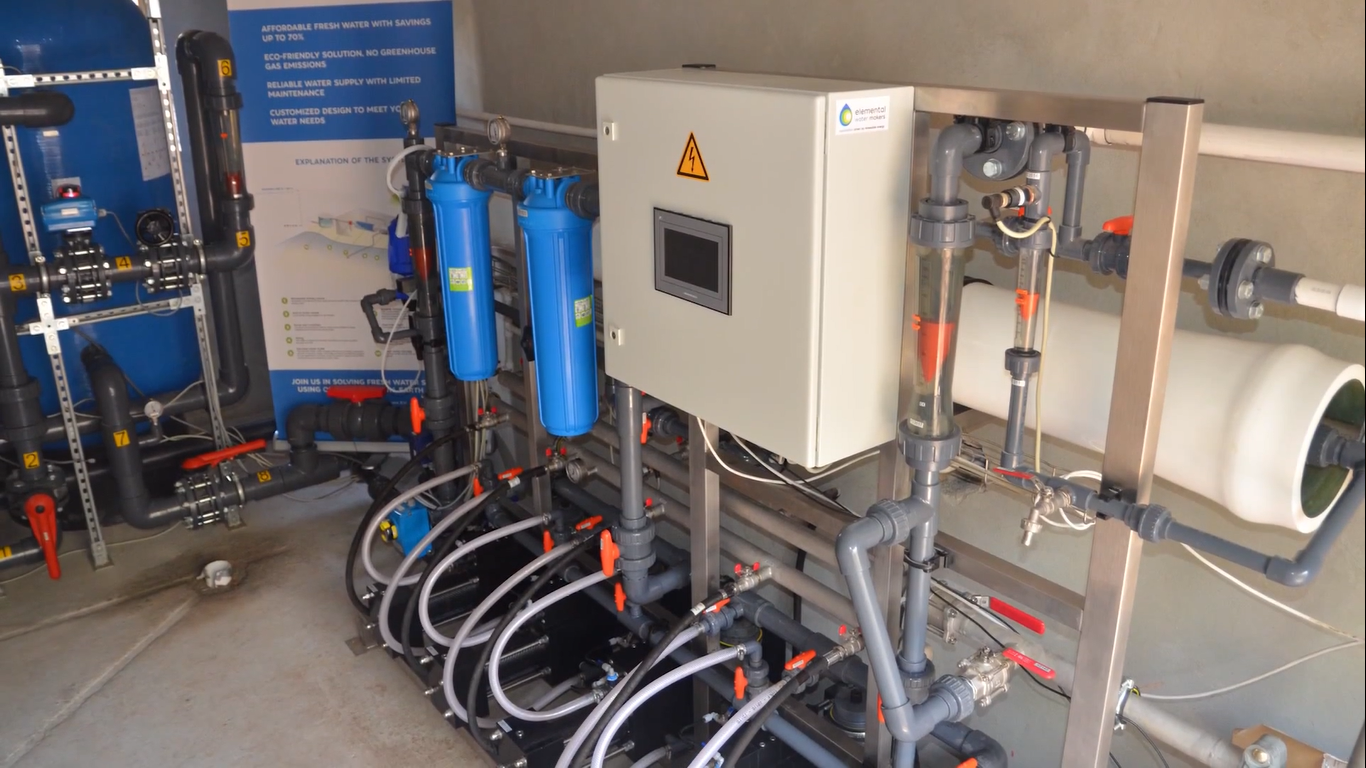
- First, there’s the product water which is fresh.
- Second, there’s the brine flow consisting of slightly salt seawater.
Reuse of the energy from the brine flow is enough to reduce the elevation requirements by 80%. This means we only require 90 metres or 290 feet. continuous production of water Pumping enough water to the buffer during the day to handle the nut allows for 24-hour operation. As a result, employing limitless resources, 12,500 litres (3300 gallons) of accessible fresh water are created each day. The system is easily scalable for water production capacities up to a million litres per day.
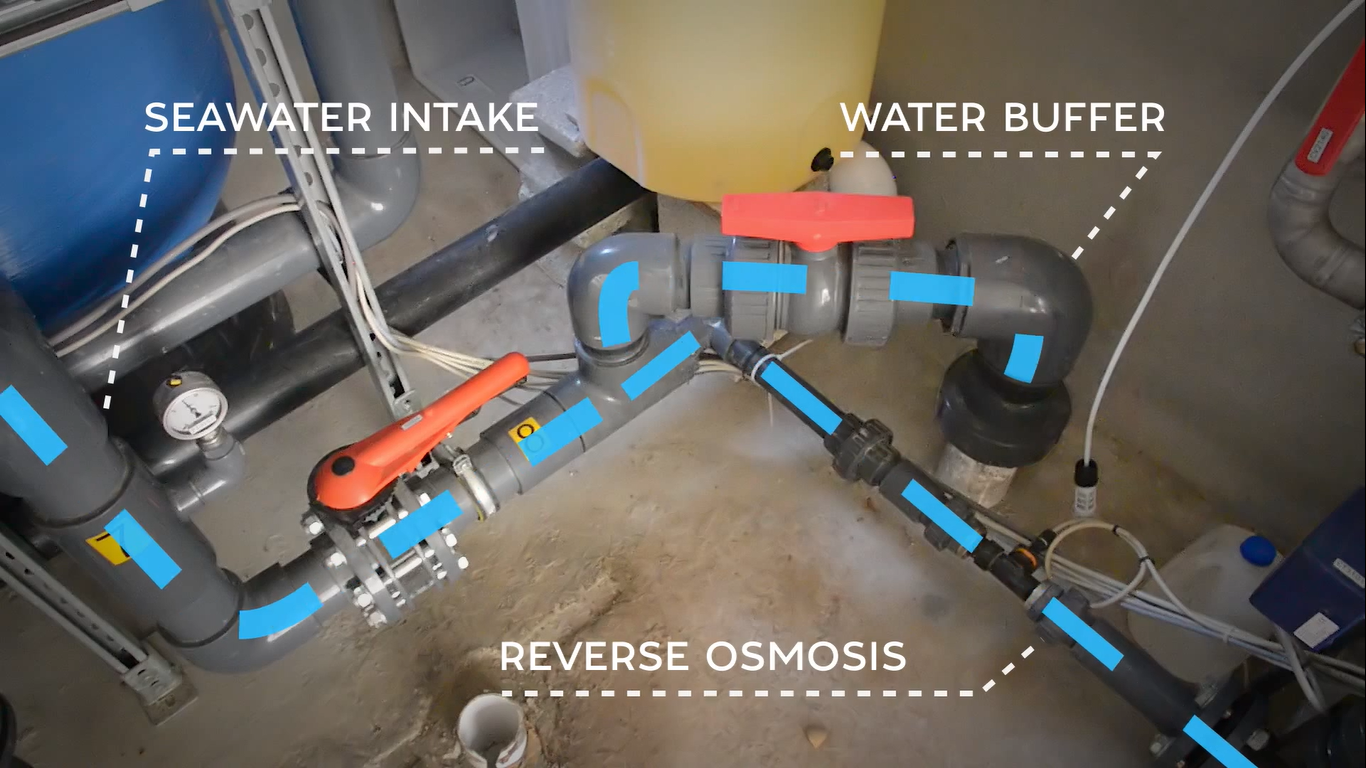 Utilizing established technologies and operating off the grid fully eliminates the need for fossil fuels ensures reliability of operation.
Utilizing established technologies and operating off the grid fully eliminates the need for fossil fuels ensures reliability of operation.
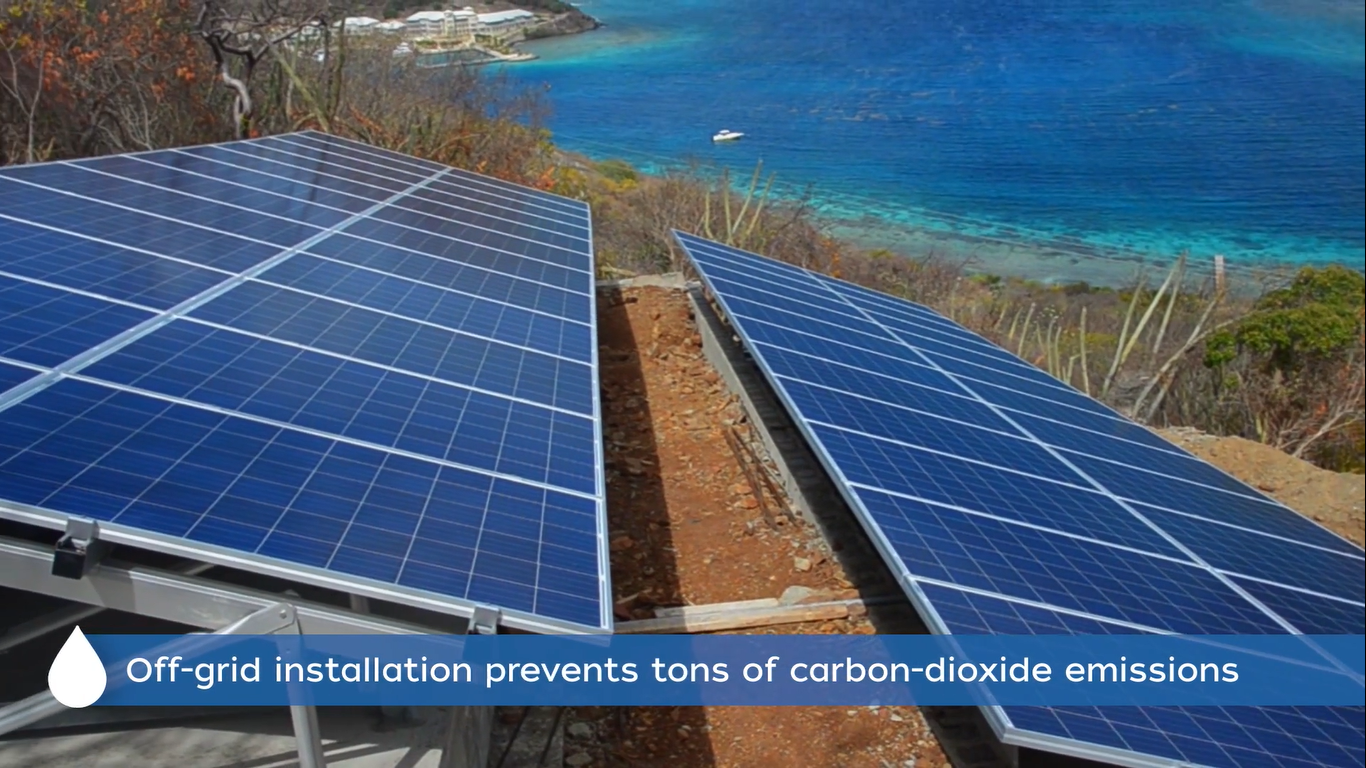 This installation prevents 25 tonnes of carbon dioxide emissions per year.The system is designed for a minimal abatement through automation and remote monitoring is included for the stress-free operation.
This installation prevents 25 tonnes of carbon dioxide emissions per year.The system is designed for a minimal abatement through automation and remote monitoring is included for the stress-free operation.
 Instead of having to run generators high pressure pumps, the water treatment system is now silent. By operating continuously without using electricity savings of up to 70% can be realised on water expenses.
Instead of having to run generators high pressure pumps, the water treatment system is now silent. By operating continuously without using electricity savings of up to 70% can be realised on water expenses.
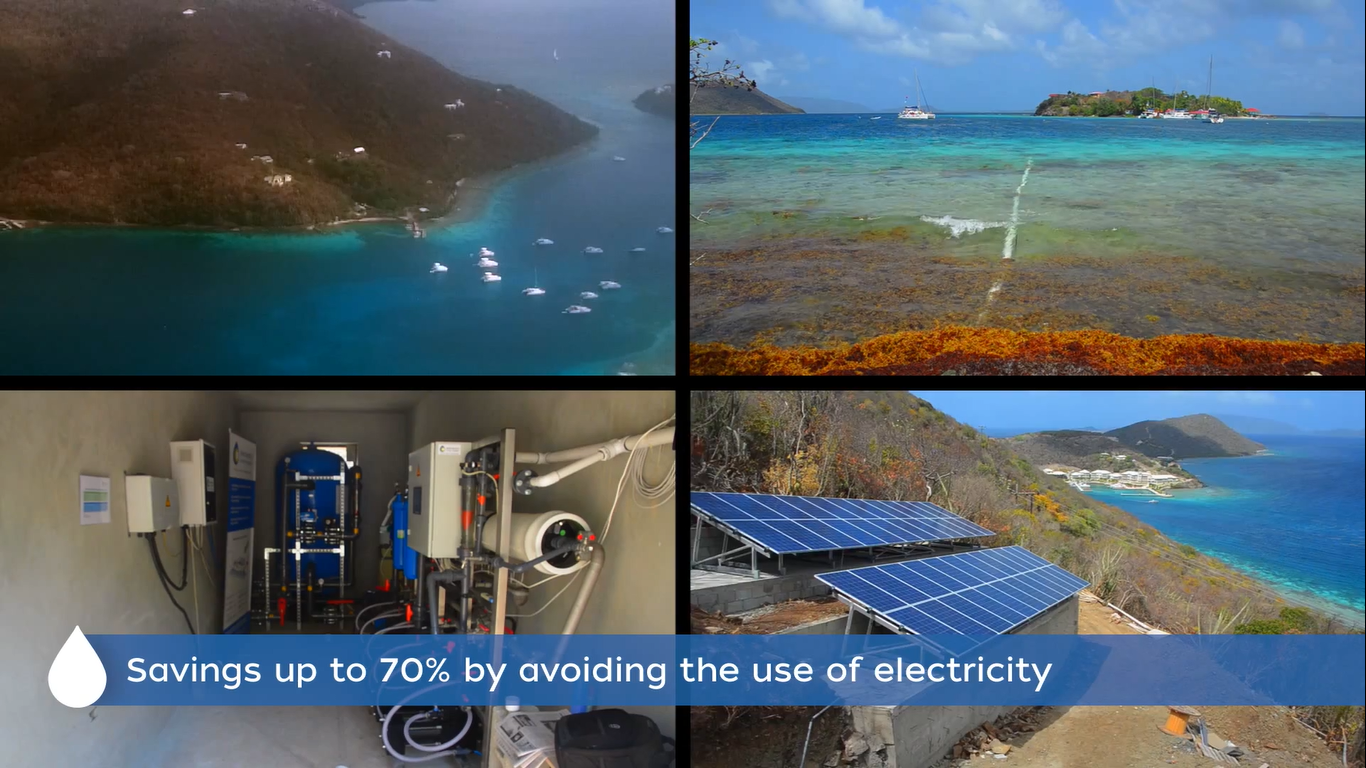 Passive Solar Desalination
Passive Solar Desalination
We’ll discuss the most effective passive solar desalination technique currently under development. Water scarcity is a major issue everywhere in the world. By 2050, the UN has warned that approximately 5 billion people may experience water shortages. Currently, 844 million people, or one in nine people on the planet, lack access to safe water near their homes. And 785 million people still lack access to clean water for drinking.
Therefore, it is a problem that is getting worse and will eventually affect most of the population. Although we have created several remedies to lessen the issue, these include seawater desalination, water recycling, and reducing water use. However, even with these measures in place, the population increase will put a strain on our freshwater supplies because we require water for many uses than just drinking, such as agriculture and industry.
Large scale seawater desalination techniques like
- Multistage flash
- Multiple-effect distillation
- Reverse osmosis
are being used, but they are energy intensive processes. They also require a strong infrastructure of energy and water supply.
 Therefore, developed and rich nations can afford this technology. On the other side, there are areas where there isn’t even grid energy. For such regions a variety of passive solar desalination techniques have been developed.
Therefore, developed and rich nations can afford this technology. On the other side, there are areas where there isn’t even grid energy. For such regions a variety of passive solar desalination techniques have been developed.
However, the drawback of these methods is their low efficiency, which necessitates a sizable setup area and building structure for solar desalination.
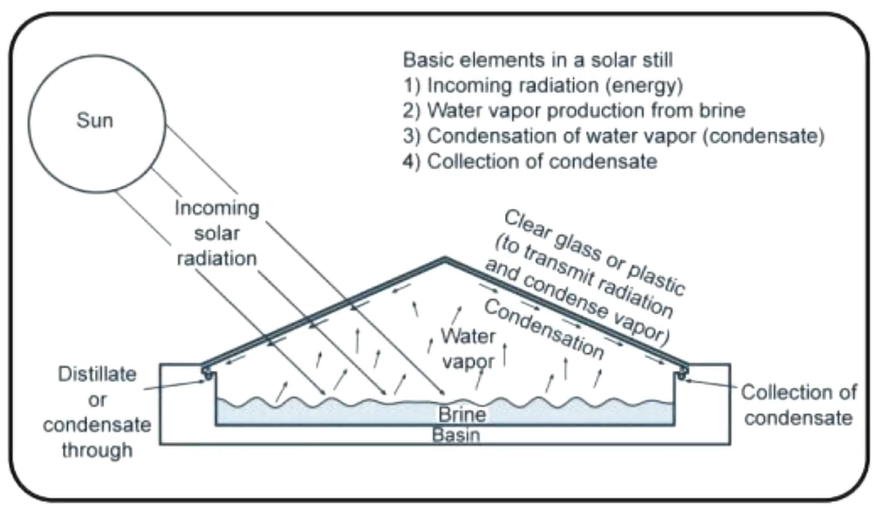 This raises the price. There have been efforts over the past few decades to get around this efficiency restriction.
This raises the price. There have been efforts over the past few decades to get around this efficiency restriction.
 A system that we built has a record-breaking solar to vapour efficiency value of 385 percent. 5.78 litres per square metre per hour, which is a very high-water evaporation rate, was accomplished. Thermally Localized Multistage Solar Still, or TMSS for short, is the name of this design. This system has a straightforward layout. Because it reuses the heat released during condensation, it differs from other systems.
A system that we built has a record-breaking solar to vapour efficiency value of 385 percent. 5.78 litres per square metre per hour, which is a very high-water evaporation rate, was accomplished. Thermally Localized Multistage Solar Still, or TMSS for short, is the name of this design. This system has a straightforward layout. Because it reuses the heat released during condensation, it differs from other systems.
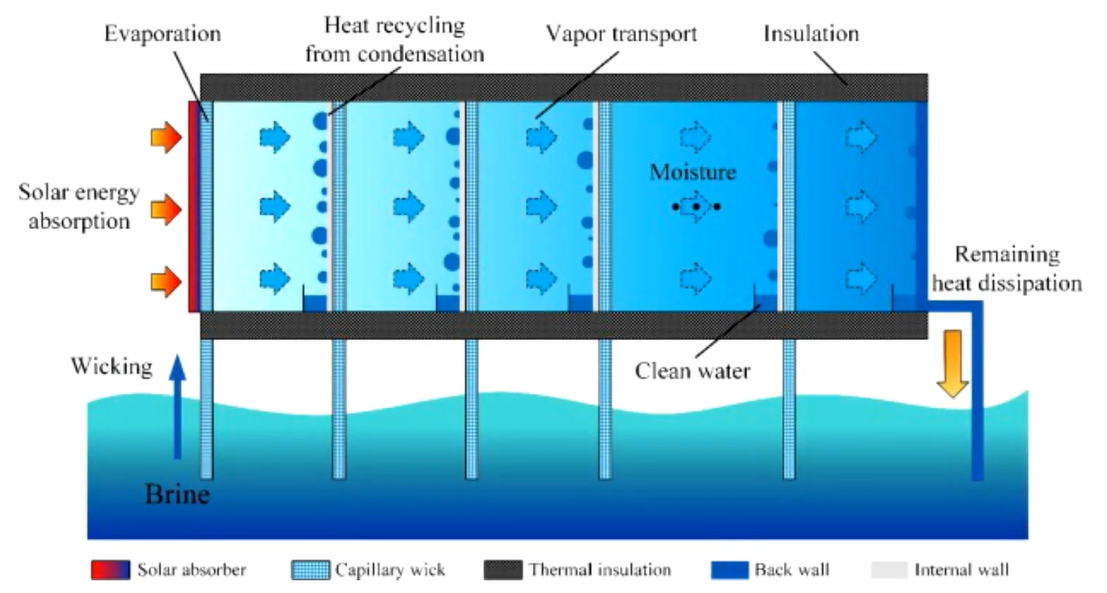 The system comprises of different layers, each having a separate function the topmost layer is made up of high absorption surface. The second layer that is directly behind the absorption layer is a wicking membrane. One end of the kitchen towel was dipped into the seawater.
The system comprises of different layers, each having a separate function the topmost layer is made up of high absorption surface. The second layer that is directly behind the absorption layer is a wicking membrane. One end of the kitchen towel was dipped into the seawater.
There was an air gap followed by a condensing plate to enable faster water collection and removal, a hydrophobic coating that is Teflon on aluminium plates was used. The condensed water was collected at the bottom of the condensing plates and was channelled into a bigger reservoir. In this system used at the Waterman Australia up to 10 stages of this arrangement were used.
 That is the wicking membrane and the condenser plate with an air gap were repeated one after the other.
That is the wicking membrane and the condenser plate with an air gap were repeated one after the other.
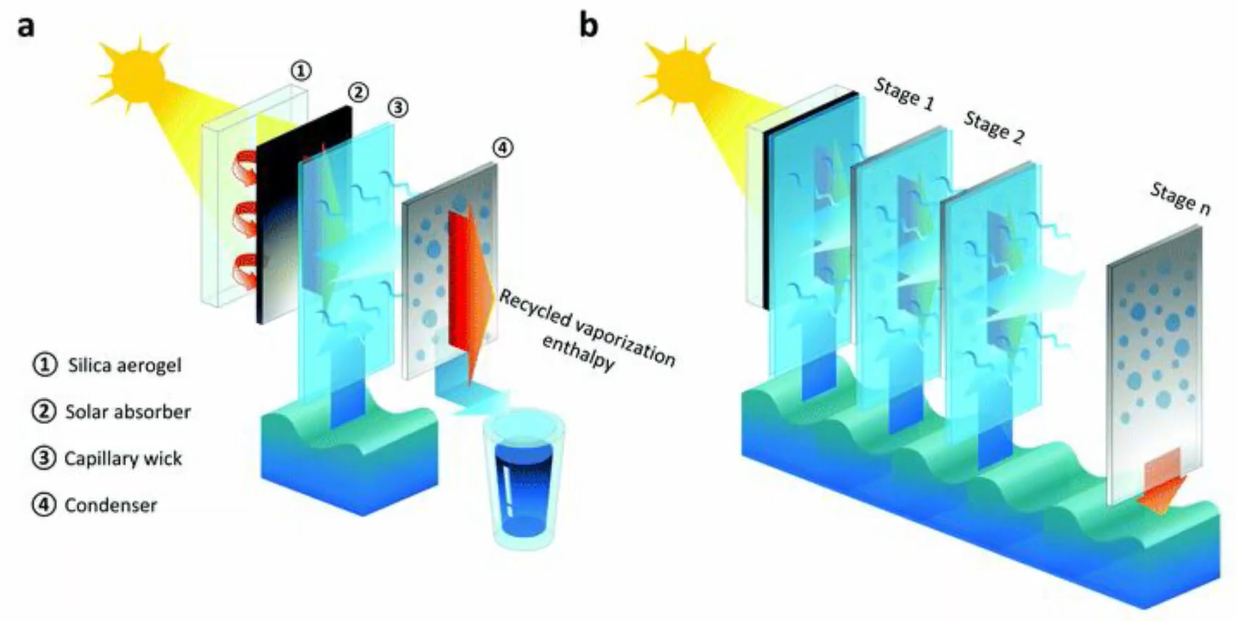 As the heat builds up on the condenser, it spreads out to the latter stages. It has been suggested that the stages can be increased, but that returns will diminish. Even with five stages, the TMSS outperforms any other passive solar desalination system that has been developed to date.
As the heat builds up on the condenser, it spreads out to the latter stages. It has been suggested that the stages can be increased, but that returns will diminish. Even with five stages, the TMSS outperforms any other passive solar desalination system that has been developed to date.
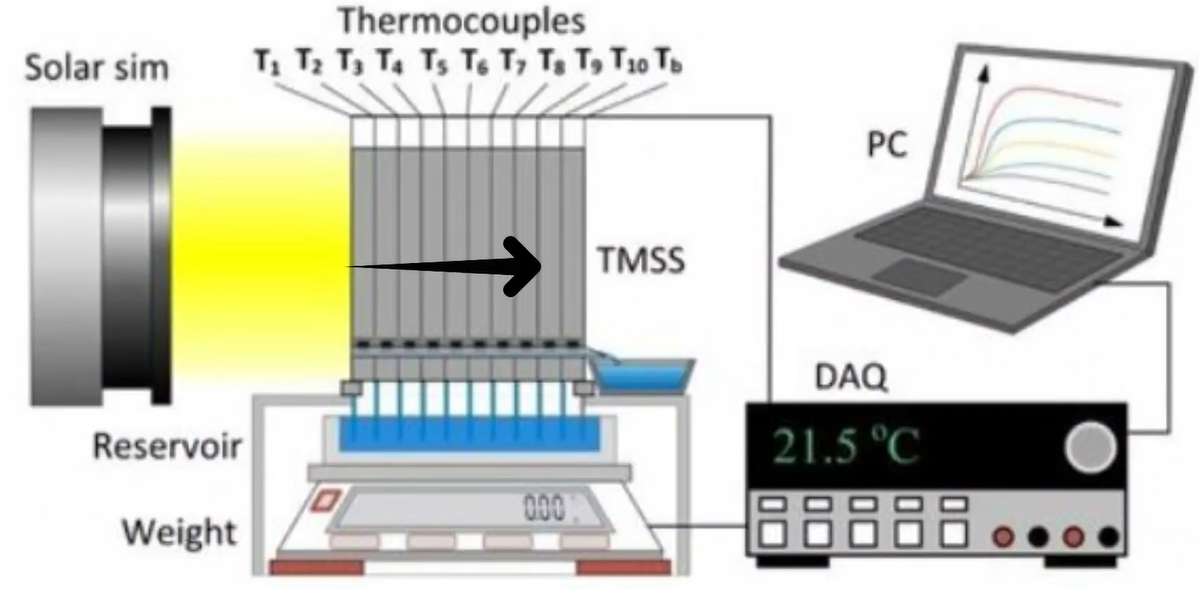 This system also takes care of another problem that most desalination plants face it is that of salt crystals or brine accumulation. When water is faked using any capillary effect enhancing material like a foam or kitchen towel in this case, then salt starts accumulating and crystallises on the surfaces of the wicking material.
This system also takes care of another problem that most desalination plants face it is that of salt crystals or brine accumulation. When water is faked using any capillary effect enhancing material like a foam or kitchen towel in this case, then salt starts accumulating and crystallises on the surfaces of the wicking material.
This crystallised salt reduces the efficacy of the system. However, during the night-time when the system is not active, the salt is sucked back into seawater.
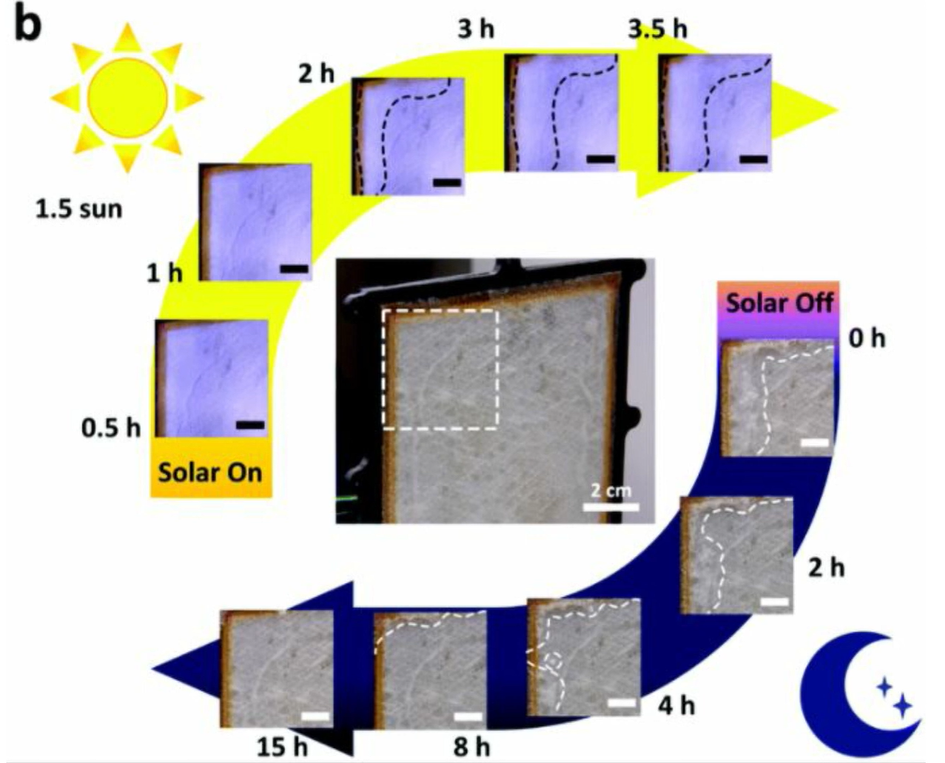 The reason is that the higher concentration of salt on the vacant surface starts diffusing back into the seawater, which has a relatively lower concentration, the TMSS system can be made to float over the water, thus reducing costs associated with a grounded structure in the seawater.
The reason is that the higher concentration of salt on the vacant surface starts diffusing back into the seawater, which has a relatively lower concentration, the TMSS system can be made to float over the water, thus reducing costs associated with a grounded structure in the seawater.
It might be very helpful in places with a lack of or the high cost of energy but plenty of sunlight and sea water. Researchers have suggested two potential uses for this device.
- The first TMSS panels in operation were floating in seawater and were able to pump fresh water to people on land.
- The second uses a flat panel on a small seawater tank and is intended for residential use.
According to the researchers, a system with a solar collection area of approximately one square metre may supply all of a single person’s daily drinking water needs. The production costs can be kept low because this technique doesn’t employ any unusual materials. Be aware that aerogel, a pricey material utilised as insulation for Waterman Australia tests, can be replaced with less expensive options. A system designed to accommodate a family’s needs is thought to cost around $100.
Keep in mind that the system was tested in both lab and real-world settings. even though the system’s actual-world performance fell by 40%. It still performs far better than any other passive desalination system available today. In actual use, it had a record-breaking productivity of 2.6 litres per kilowatt hour. This is almost on par with the best atmospheric water generation system and is quite high for a passive solar desalination system. However, they employ high grade electricity as input rather than solar heat flux.
Let’s now describe the system. The device uses solar energy that is directly connected to a pump that removes saltwater and uses readily available renewable energy. In order to create the pressure needed for the reverse osmosis process, the salty source water is diverted toward a raised water buffer. As the source water becomes more salinized, this would necessitate a substantial elevation difference in the immediate area.
By reusing the energy of the brine flow through the use of an energy recovery device, we were able to significantly lower the amount of elevation difference needed to get around this restriction. Using the continuous pressure that the high-water buffer provides, freshwater is produced at a steady rate around-the-clock by properly sizing all components. The system runs continually without any additional electricity thanks to the saltwater buffer, storing the freshwater in a water tank. The system also includes pre filtration and post treatment, which are reliant on the quality of the supply water. Waterman Australia water producers offer an effective and environmentally friendly solution once the water and geographical requirements are recognised.
 Design to remove the brine reject with no negative effects on the environment, considering the rate of evaporation and the necessary surface area. Due to the remote location of those installations, the system cannot be always powered.
Design to remove the brine reject with no negative effects on the environment, considering the rate of evaporation and the necessary surface area. Due to the remote location of those installations, the system cannot be always powered.
The greatest way to restore power to all project units and facilities while having no negative effects on the environment was using solar power technology. Each plant will have the same size, have a four cubic metre per hour desalination capability, and be remotely controllable. 300 square metre solar panels will be used by these plants to collect solar energy, which will be used to produce 45 kilowatts of sustainable electricity every hour.
Water Desalination Facility Powered by Solar Energy
The factory is entirely self-contained, and a technician maintains it, making frequent trips to check on the business. Every plant has the same size and capacity. They want to use 300 square metres of photovoltaic panels to collect solar energy, which will provide 45 kilowatts of electricity every hour. The salty water comes from deep in the desert and is pulled out with a well water pump. It is then sent to a storage tank until it is ready to be used. The water is then pumped to the desalination plant, where it is treated with reverse osmosis.
In order to purify the water at the molecular level, pressure is used to push water that contains salt and other contaminants across a membrane.
 Water molecules are the only particles that can flow through the membranes’ 0.0001-micron pores. Four cubic metres of pure drinking water are produced each hour by the procedure. Modern Waterman Australia electronic equipment that has a traffic light control system to facilitate monitoring and use is used to control and monitor the entire operation. Solar energy powers the entire operation, including the well water pump.
Water molecules are the only particles that can flow through the membranes’ 0.0001-micron pores. Four cubic metres of pure drinking water are produced each hour by the procedure. Modern Waterman Australia electronic equipment that has a traffic light control system to facilitate monitoring and use is used to control and monitor the entire operation. Solar energy powers the entire operation, including the well water pump.
A bank of backup batteries is there, and they are also powered by solar energy. In the event that solar power falls below a specific threshold as a result of the sun being blocked out by a sandstorm or other similar circumstances, they will take over. In doing so, the machine will be able to shut down properly while waiting for the sun to rise again.
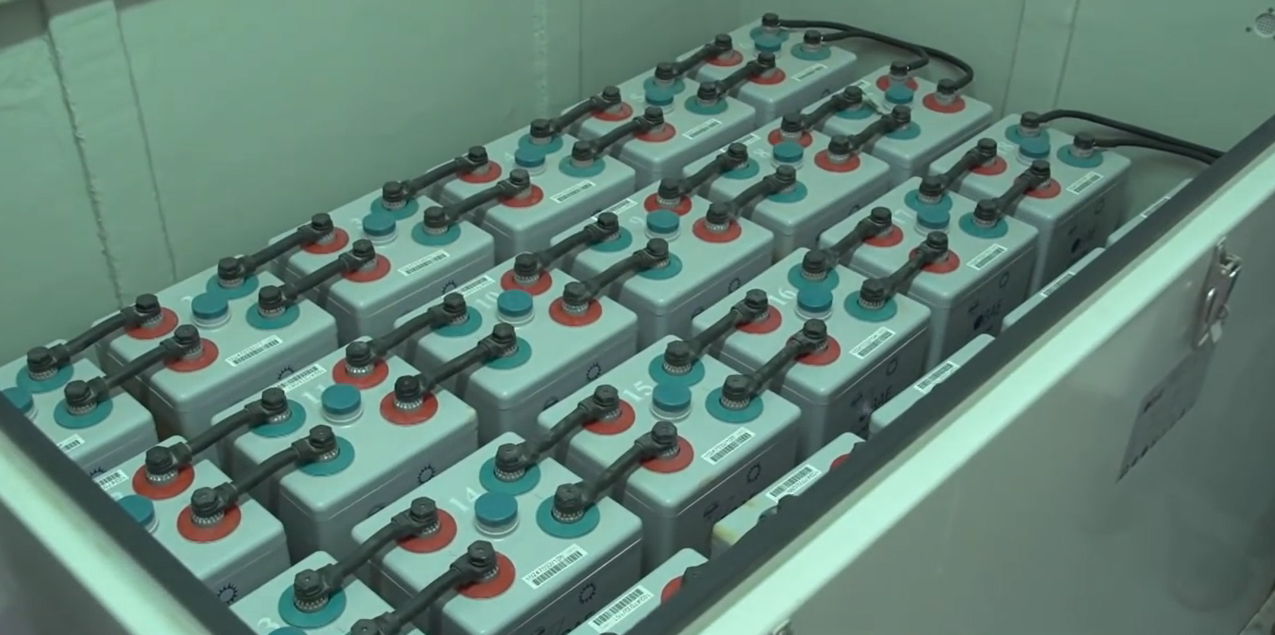 Once the saline water has been processed into drinking water, it is pumped into a large white holding tank. From there it is used to fill an open channel one metre wide and 600 metres long. This will be used as a drinking source by animals. After processing there is some salty water left called brine. This is pumped to an evaporation pond where it evaporates leaving just salt which can be collected and used for other purposes.
Once the saline water has been processed into drinking water, it is pumped into a large white holding tank. From there it is used to fill an open channel one metre wide and 600 metres long. This will be used as a drinking source by animals. After processing there is some salty water left called brine. This is pumped to an evaporation pond where it evaporates leaving just salt which can be collected and used for other purposes.
The drinking water is also used to irrigate large new plantations of native trees, shrubs and grasses. This will create a green area which will provide food and shade for the animals and birds, particularly the houbara bustard which is also being reintroduced to the protected areas. These self-contained, environmentally friendly, solar water desalination systems from Waterman Australia are the ideal option.
 Solar Distillation
Solar Distillation
Solar distillation is a device which is used to convert the impure saline water into pure water using solar radiation.
Solar distillation is typically employed in a distant place where there isn’t enough access to drinkable water. Rural residents collect rainwater, but because of impurities in the water, they are unable to drink it directly.
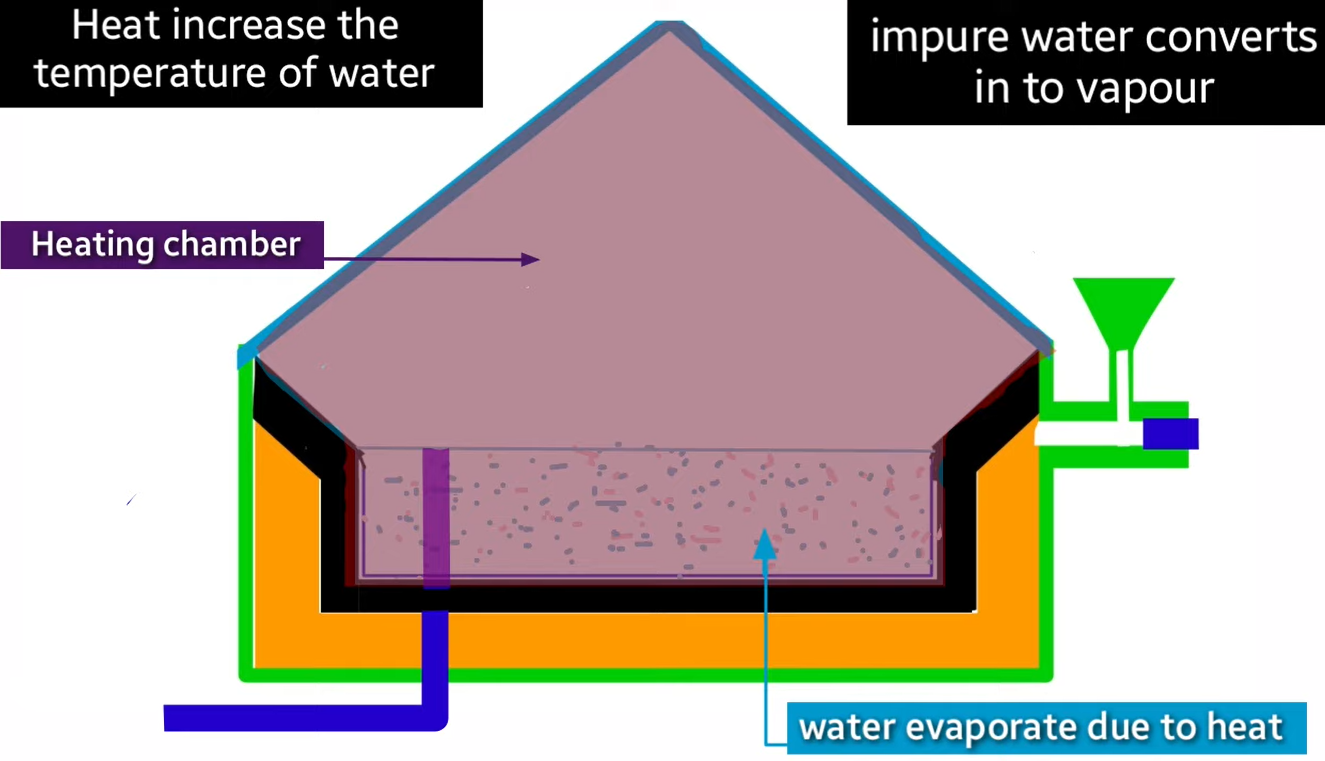 We accept the water into the purification chamber inside, where it will be treated before being used as drinking water. when sunlight penetrates the water room through the glass ceiling. These rays were absorbed by absorber plates after diffusing through the water.
We accept the water into the purification chamber inside, where it will be treated before being used as drinking water. when sunlight penetrates the water room through the glass ceiling. These rays were absorbed by absorber plates after diffusing through the water.
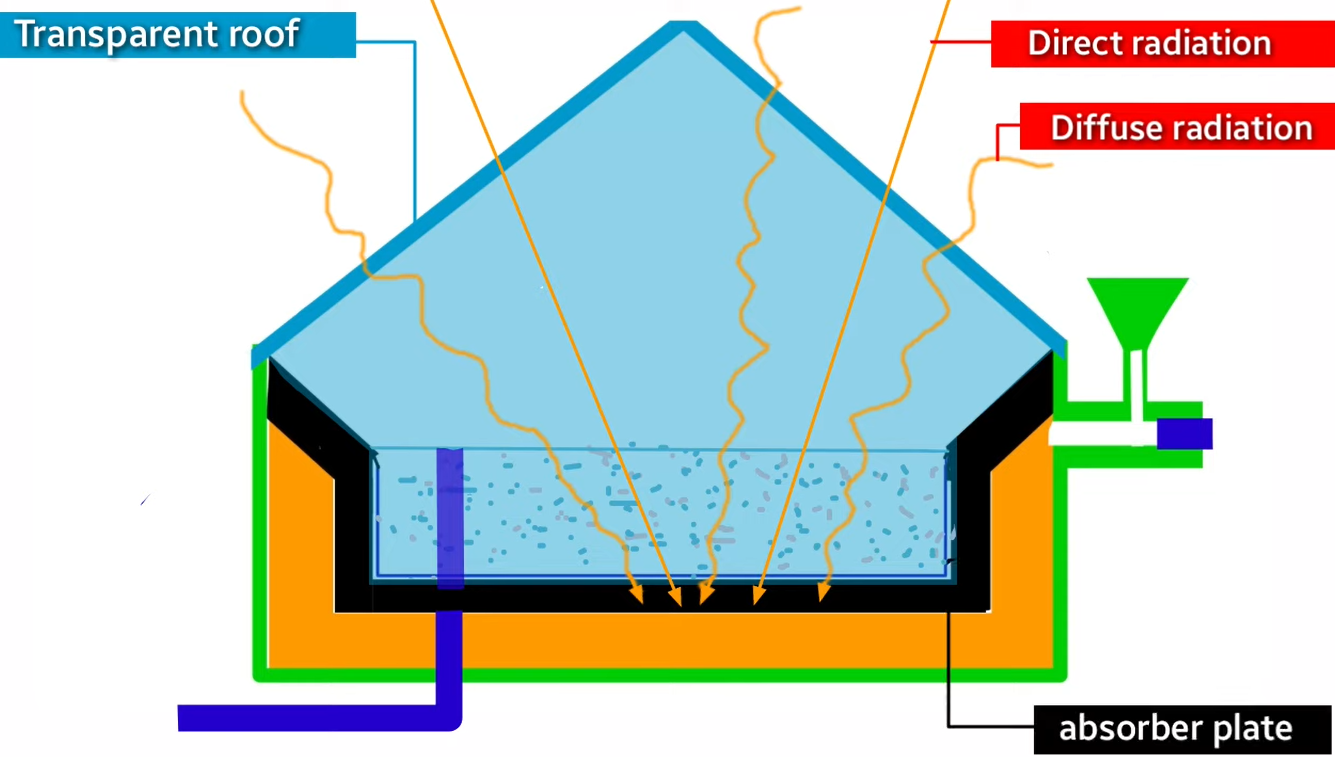 When direct sunlight strikes absorber plates, heat is delivered to the saline water, which heats up and causes a rise in temperature that turns the water into vapour these vapour rise, hit walls, and become drops when they do so. These droplets of filtered water run through the water channel and are collected in a side tank.
When direct sunlight strikes absorber plates, heat is delivered to the saline water, which heats up and causes a rise in temperature that turns the water into vapour these vapour rise, hit walls, and become drops when they do so. These droplets of filtered water run through the water channel and are collected in a side tank.
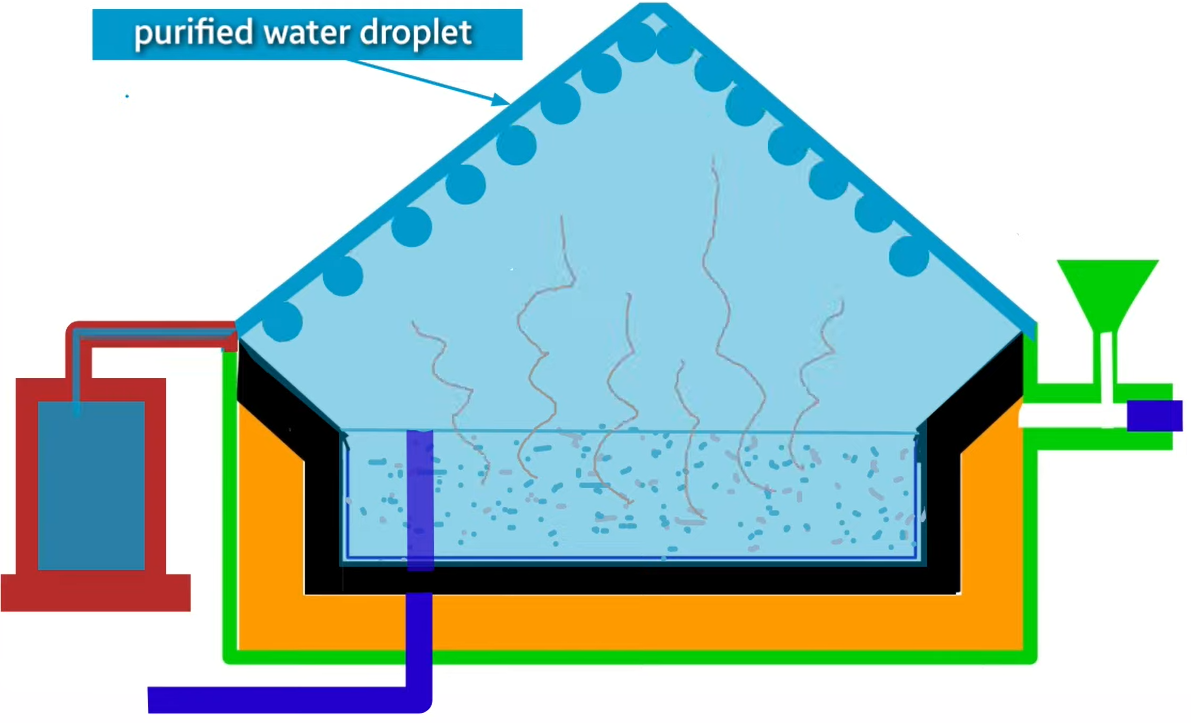 Advantages
Advantages
- Low cost and easy maintenance.
- It uses renewable energy, thus there are no energy costs.
- No moving parts used in solar still.
Disadvantages
- Distillation is a relatively slow process.
- Large amounts of water cannot be purified using this method.
- In the rainy season, it is not used.
Applications
Solar still is used where drinkable water is not available in large quantity in that type of area solar steel is most widely used for drinking and cooking.
The SOLAR RO WATER FILTERATION
In order to remove ions, molecules, and bigger particles from drinking water, reverse osmosis (RO) uses a semi-permeable membrane.
The RO process purifies water by removing a variety of dissolved and suspended species, including bacteria, making the water suitable for drinking.
 RO Filtration Plant Procedure
RO Filtration Plant Procedure
Details on the system’s solar-powered RO components
- Pump for Solar Water
- Sand Pressure Filter
- Antiscallent Slumbering
- Filter with Granular Activated Carbon
- Pump for raw water feed
- Reverse Osmosis System
- Storage Tank
- PV Modules
- Inverter (Specially designed transformer based for RO Filtration Plants)
 The Small Sewage Treatment Plant Running On Solar
The Small Sewage Treatment Plant Running On Solar
The two primary categories for water treatment processes are described here. A physical change in the condition of water is known as distillation, and it includes processes like vapour compression distillation (VC), humidification dehumidification, multi-effects distillations (MED), and multistages flash distillation (MSF).
The other is a filtering process connected to membrane technologies including reverse osmosis (RO), membrane distillation, capacitive deionization, electrodialysis, and electrodialysis reversal (EDR) (MD). There are also hybrid distillation methods that use solar thermal as a secondary source of thermal energy and/or photovoltaic (PV) as a secondary source of power.
A small-scale, independent solar thermal/PV water treatment system that has a solar still for straightforward distillation is used for analysis. The solar still is an affordable water treatment method in isolated places, despite having a low distillation efficiency. The solar environment is assumed to be the same, with a daily average global solar radiation of 4.97 kWh/m2 and abundant sunshine.
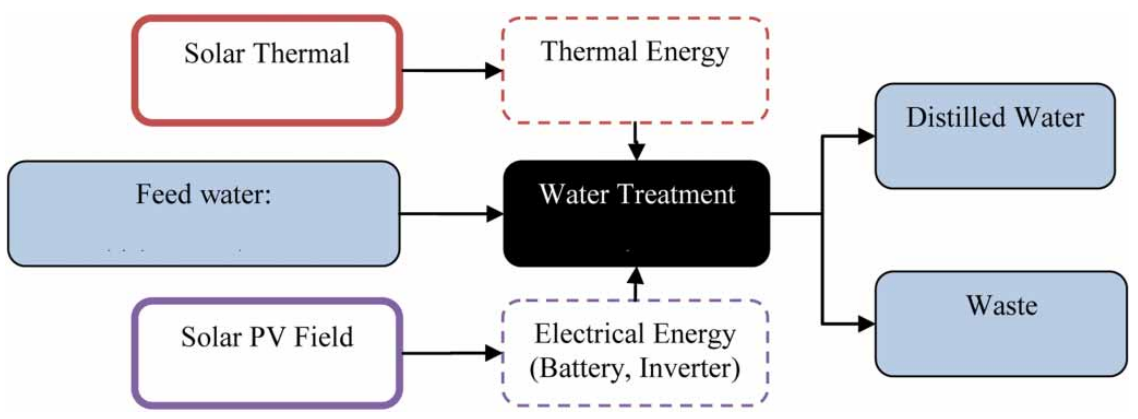 Clean, fresh water is one of the most important things that people in faraway places need to have to live in a clean environment. People who live in remote areas need about 15 litres of clean water per person, per day, to drink and cook with. People who live in coastal settlements, on the other hand, need about 50 litres of fresh water per person per day. This is because they also need water for sanitation and bathing, in addition to drinking and making food.
Clean, fresh water is one of the most important things that people in faraway places need to have to live in a clean environment. People who live in remote areas need about 15 litres of clean water per person, per day, to drink and cook with. People who live in coastal settlements, on the other hand, need about 50 litres of fresh water per person per day. This is because they also need water for sanitation and bathing, in addition to drinking and making food.
So, for the study, a simple solar still distillation method is used in a small-scale solar thermal/PV water treatment system. It shows that, assuming a 15-year life cycle, the cost of making clean, fresh water with a water treatment system is US$4.45 per m3.
Since most people in these rural areas live below the poverty line, a 10% tax exemption isn’t as good of an incentive to get them to invest in water purification systems. In future, more alluring incentives like a subsidy programme might be taken into consideration to support the proposed notion in remote places. The study’s hypothesis is only applicable to isolated locations with abundant sunshine and water resources, whether they are sea water or tainted, raw freshwater.
Soler Water Heater
We will examine material pertaining to solar water heaters, starting with the most common and basic kind found in homes today. Let’s examine how it is built and operates.
 The solar collector and water tank are the two main components of this solar water heater, and they are connected to one another by a variety of pipelines. The solar collector is the first component, and the water tank is the second.
The solar collector and water tank are the two main components of this solar water heater, and they are connected to one another by a variety of pipelines. The solar collector is the first component, and the water tank is the second.
Check out the solar collector in which one collector that faces the sun. Therefore, if the sun’s rays are coming in this direction, it is imperative that solar collectors face the sun. In the solar collector, we have several tubes that are circulating here, and above this specific area, we have transparent glass.
This tube has an exit pipeline from the exit pipeline going to the water tank at the same time, the inlet pipeline is coming from a water tank. Both pipelines enter the tube from the bottom. The heat from the sun will be collected by this solar collector, which is its initial solar component.
A water tank is the following component. In essence, the water tank has four pipe connections, the first of which is in this one and comes from the solar collector. Two collectors, one connected to the solar collector and the other coming from the outside, are being approached by the second pipeline. With this specific pipeline, the cold water will enter the water tank from which the hot water will be drawn.
Therefore, the solar water heater’s purpose is to heat the water so that it is accessible through this specific conduit. The green colour indicates that there is insulation on the water tank, which will prevent heat loss to the atmosphere. Now that we’ve talked about the construction, it’s time to get to work.
When the sun’s rays hit the tubes and fall on them, the water inside is what we are experiencing. As a result, the heat from the sun will cause water to warm up. We are shown that the orange and blue colours represent hot and cold water, respectively. You can see that the heated water is on the upper part and the cold water is on the lower half, both of which are coming from the water tank.
Now that the water has been heated by the sun, it will become lighter. This is because the density of the water will decrease as it warms, and as the density decreases, the water will get lighter and want to travel in a portside direction.
In this case, we have provided a water tank at a higher height while bringing in a bill collector at a lower height. Water will attempt to travel upward through this specific pipeline, which we have identified as a hot water pipeline, if it becomes lighter after being heated in the solar collector. As a result, you can observe that the water will travel in the manner shown here as it becomes lighter and is deposited in the water tank.
Thus, hot water will fill the upper portion of this tank while cold water from the outside will fill the lower part. However, in general, cold water has a larger density than hot water, thus the hot water will be on the upper side. While a result, the water tank’s volume remains constant as hot water enters from this side.
Therefore, some water must be brought outside so that it can be turned into cold water, which will then enter the solar collector. Thus, hot water is going upward while cold water is moving downward. Therefore, this overall flow of water is caused by the difference in densities, with hot water having a lower density and travelling upward, and cold water having a higher density and moving downward.
So, water is moving now because of the difference in density. Therefore, we don’t offer any external equipment like a pump or other gadgets. Thermos-syphon solar water heaters are this specific type of solar water heater. The term “thermosyphon solar water heater system” refers to the fact that water is moving because of temperature. We can remove some hot water from this one because the cycle is complete, and water is now coming from this and heading to the character on this side once more.
We can use hot water from this for applications like batting, etc., and if water is going outside, cold water is also coming inside from the other. So, cold water will enter here, and hot water will exit; the cold water that has arrived here will go to the solar collector, and the hot water that has come from the solar collector will enter here and exit. This shows how a thermosyphon solar water heater works and how it goes through its cycle. When the water circulation rate is insufficient, a pump must be supplied. So, if I install a pump here, what will happen is that it will draw water from the side and supply it to the side.
Therefore, a pump will speed up the flow of water, allowing for greater water flow throughout the system as well as greater water flow at the exit. The project is known as an active solar water heater because there is no pump involved. Therefore, if it operates even without a pump, the system is referred to as a thermosyphon water heater.
Solar Based Water Treatment Frequently Asked Questions
1) Which method is applicable to desalinate the water using solar energy?
A proven desalination technique, such as multistage flash distillation, multiple effect evaporation, or reverse osmosis, is combined with solar energy gathering (via the use of photovoltaic panels) in indirect solar desalination (RO). Now a days reverse osmosis is the most viable method.
2) What is advantage of solar distillation?
Solar distillation is a low-carbon technique that is both easy and affordable. It can deliver clean water in modest quantities for residential usage and other purposes. Multiple solar distillation systems are needed for large quantities. There are two types of solar distillation systems: passive and active.
3) How much water can a solar distillation produce?
The water surface area covered by commercially available versions yields roughly 0.3 liters of water per hour per square meter (L/h/m2).
4) What are the challenges of using solar energy?
Disadvantages of Solar Energy
- Cost. The initial cost of purchasing a solar system is fairly high.
- Weather-Dependent. Although solar energy can still be collected during cloudy and rainy days, the efficiency of the solar system drops.
- Solar Energy Storage Is Expensive.
- Uses a Lot of Space.
- Associated with Pollution.
5) Does a solar still purify water?
Solar still generates 12 times as much pure water as industrial systems. Solar stills are tank-like devices that use the sun to evaporate contaminated or salty water and condense the vapour into potable water. Large, expensive stills, however, can only supply a small family with enough water.
6) What are limitation of photovoltaic system?
Like all renewable energy sources, solar energy is intermittent; it may not shine at night and there may be cloudy or wet conditions during the day. Solar energy panels are therefore a less reliable choice due to the intermittent nature and unpredictable nature of solar energy.
7) What is the lifespan of photovoltaic panels?
According to studies, solar panels typically last 5 to 20 years, which is what manufacturers would consider the ideal lifespan. Which isn’t bad at all given that a boiler’s lifespan is typically between 10 and 15 years. The warranty on solar panels is often the longest of all the parts of a solar PV system.
8) Do photovoltaic devices require a lot of maintenance?
Fortunately, solar panels need little upkeep to continue functioning effectively and providing your home with solar energy. Cleaning is the most frequent sort of maintenance needed for your panels. Particularly after storms or prolonged dry spells, dirt and debris can amass on your panels.
9) What are the limitations of purification of water using sunlight?
Particulate matter cannot be removed from water using solar radiation. Additionally, it is unable to remove from water dissolved salts, minerals, or metals. Though some microorganisms can be killed by solar radiation (UV and infrared rays), they are ineffective against all microbes, therefore they cannot entirely filter the water.
10) What are the benefits of using solar power to purify water?
Solar water disinfection (SODIS) is a water treatment method that:
- does not change the taste of water
- is applicable at household level
- is simple in application
- relies on local resources and renewable energy
- is replicable with low investment costs
11) How can solar energy be used in desalination?
Thermal energy is the primary need for the desalination process, and solar energy systems’ thermal and PV applications can supply this energy. To create fresh water, this energy can be combined with various structure and capacity distillation systems.

